 By Staff By Staff
June 15th, 2017
BURLINGTON, ON
This should be interesting.
Tom Muir and Greg Woodruff, both Aldershot residents want to publicly debate Rick Craven the city Councillor for Ward 1.
Muir has been a thorn in Craven’s side since he first got elected to office. Woodruff, who ran for the office of Regional Chair in 2010, is no less determined than Muir to make his point – just not as prolific.
There is a potential development on Plains Road on the property that currently is home to a bingo hall and a Home hardware.
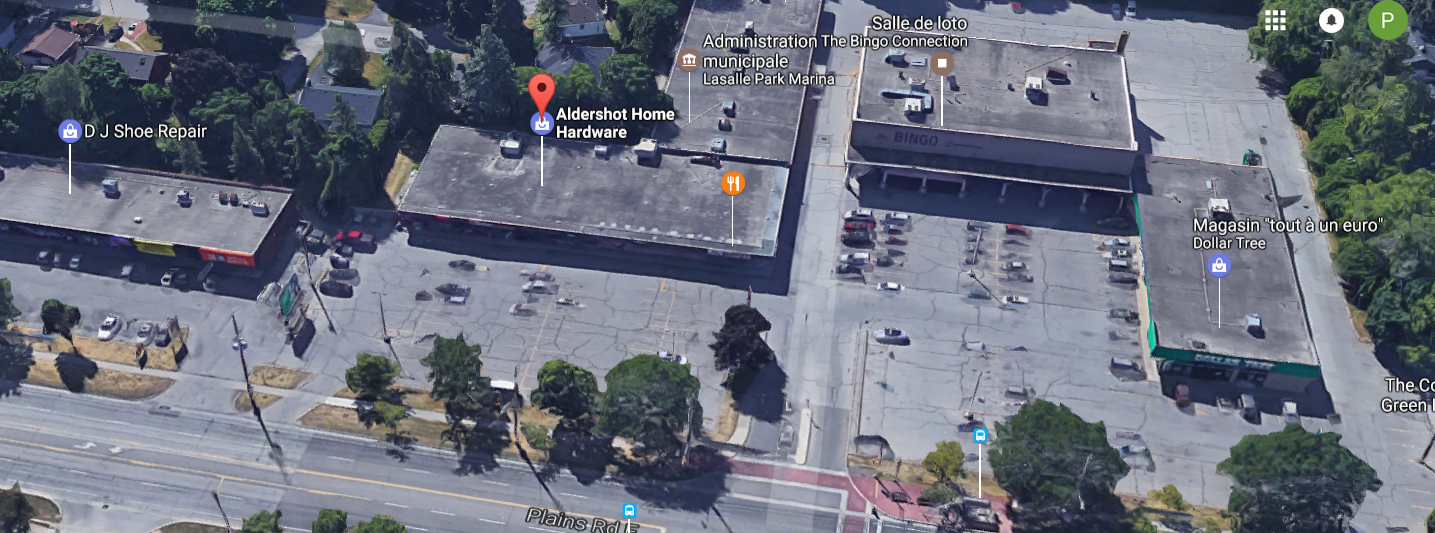 Location of the property on Plains Road that a developer has expressed an interest in developing. A developer, National Homes, hasn’t filed anything with the city – so it is just talk at this point but then that is the way things work in some wards.
A developer will get cozy with the ward Councillor and learn as much as he can from the politician. Developers don’t want to go to the Planning department without some assurance that they are going to get more than a fair hearing.
When the developer has done as much as they can to create the conditions they need – they then make a formal application and the development is now in the hands of the professional planners employed by the city.
The Planning department follows all the procedures and the protocols that are in place and in the fullness of time they prepare a report on the merits of a development project that goes to city council where it is debated.
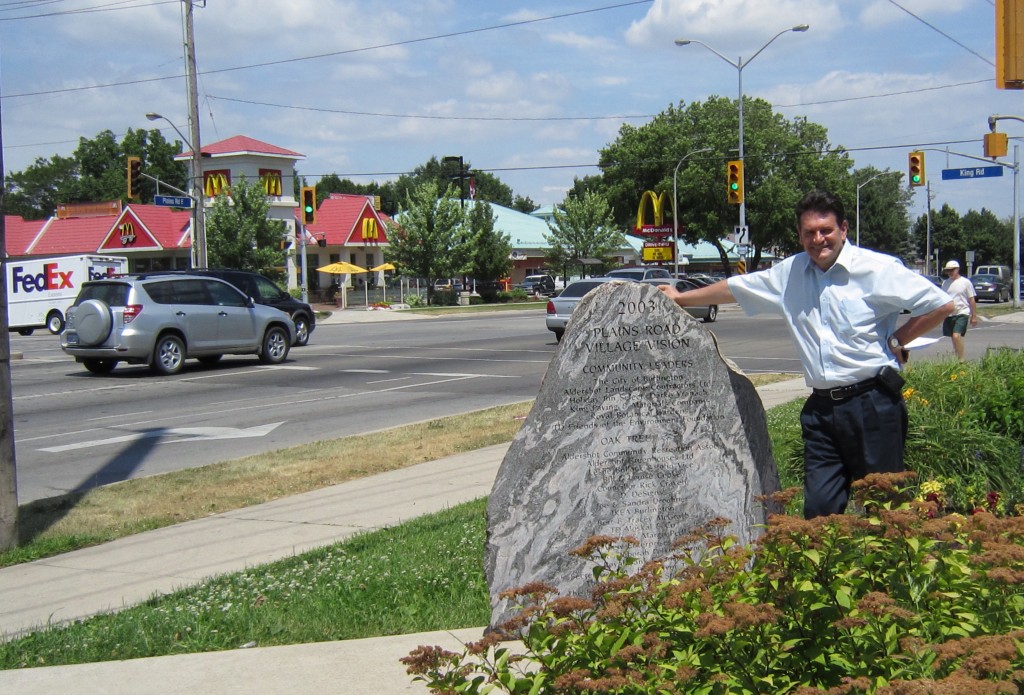 Ward 1 Councillor Rick Craven is proud of the improvements that have been made along Plains Road – some of his residents don’t share his views. Councillor Craven made mention of the development in the Newsletter he publishes and sends out to anyone who asks to have their name on the newsletter list. That’s where Muir and Woodruff became aware of the development – and they swung into gear.
When Muir first got wind of the developers thinking he sent the following to Councillor Craven:
Rick,
This notice of intended redevelopment of this large plaza personifies the issues that people have about what’s happening in Aldershot, and has been happening for some time now.
The wholesale replacement of commercial with what is basically residential, with token retail, makes a mockery of the mixed use, work, shop, play, walk, enjoy, idea.
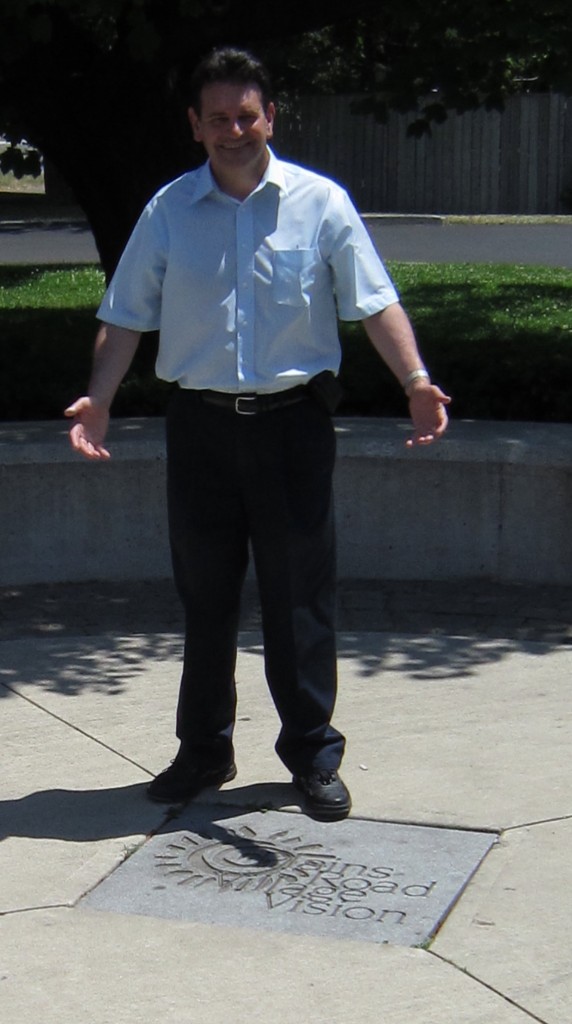 Councillor Craven refers to the Plains Road Village Vision and believes it has resulted in a different and better community- he has a number of constituents who don’ share his vision. But nobody at City Hall, including you, seems to listen and all we hear are excuses – like we need to get rid of all the commercial we have, to get more population, so we can somehow get commercial back at some time in the future. This is a joke?
This will never happen, as there will be no place to build meaningful commercial. You heard all the people comments the other night telling you this. What response we got from you guys was; well this plan goes to 2040, so wait and see.
My wife and I have frequented the Home Hardware, Dollar Store (previously Shoppers), the restaurants there, for a long time, and years ago what was a grocery store where the Bingo is. This plaza is one of the few places we find things we need and will walk to. We were very happy to have Home Hardware down here. We can’t walk to the Home Hardware in Waterdown.
All that is in your description of intentions for this site is tear down residential – town homes and mid-rise condos, and of course the token retail. There seems to be nothing anything like the present commercial in this intention statement.
You will recall we had a Canadian Tire, which suffered the same fate. The token retail there is significantly empty and does not offer a lot to replace what was there in services. We can’t walk to Burlington Mall or to Clappisons Corner.
I need to remind you about the Drewloe development replacing the large commercial – grocery store, department store, bank, liquor store, small retail – and the controversy of the bylaw change escaping attention still irks people. No place to walk to the replaces this commercial.
The retail there still has a lot of empty. The Busy Bee from the Bell Motel, Foo Ho, parcel tear down moved in but there was already one across the street next to Hauser/Tim Horton.
The 24 hour fitness gym that moved in is across the street from The Fitness Firm, where you go. That building is also in waiting for a tear down.
I can see from the planning meeting the other night that this is just going to accelerate, sweeping everything away, and there will be no large enough parcels left to build anything commercially significant to replace what we lose. And given the spectacular rise in home prices, this residential conversion is developer irresistible, and I don’t see much resistance from city planning or you.
This is exactly what is terribly wrong with what is being done. The walk, transit, bike plan accompanying this is a farce and doesn’t fit with the reality, which like was also said the other night, it’s all going to be about cars and no place to park
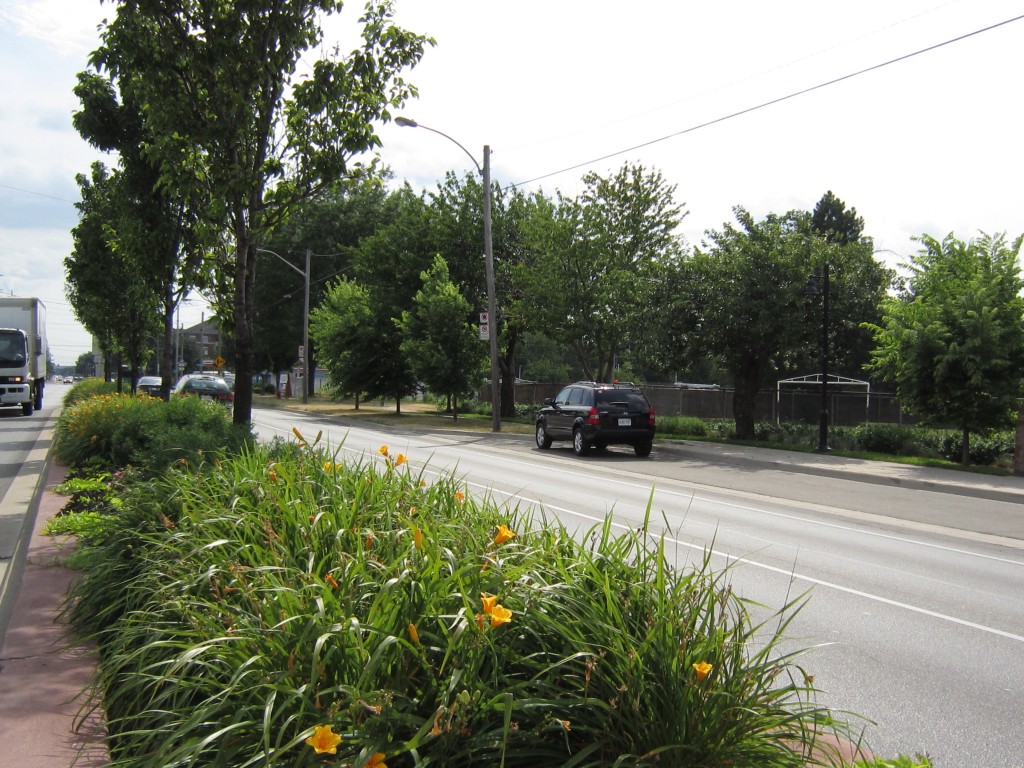 Plains Road – no longer just the highway to Hamilton but now a Main Street in a part of the city with an identity of its own The south side of Plains Rd meeting completely ignored a mention of the meeting on the same subject a couple of years ago You will recall my complaint then about rampant speculation going on then, that wasn’t even mentioned to the public when they were asked what they wanted, but all I got was a brush off.
At the recent meeting, the planning manager in attendance didn’t seem to know what was going on in this respect of land assembly. Does she really not know what’s going on?
And there was no mention at all of what people had said they wanted, and issues raised, at the meeting 2 years ago. What a waste of their time and my time.
I won’t go on further, as I find it very disturbing, and I’m starting to wonder more and more why I bother because I don’t see from my engagement over many years that city hall gives it attention in a respectful manner. I have been at several meetings where the staff in attendance look, first bored, then frustrated with questions and points, and then annoyed.
I really can’t blame them the way the reality is and it’s their job.
I can agree with more residential development, where it fits (three ten story building on Solid Gold does not fit with neighborhood right to the North), but the speculation and wholesale conversion and tear down of commercial to further this is too much.
Greg Woodruff adds to the discussion with:
I agree with this all.
Staff policies are de-commercializing Aldershot. Staff don’t care or want commercially viable stores, because the parking and space requirements of real commercial means less people on a lot.
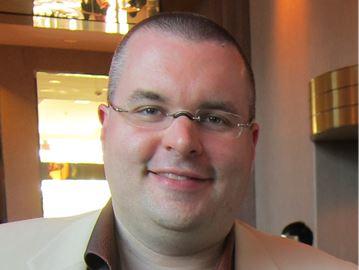 Greg Woodruff They have turned the place where we live into a math problem and the only problem is the human bugs that don’t quite act as they want.
From 5 years ago Aldershot has:
1) Less trees than ever
2) Less stores than ever
3) More traffic congestion than ever
If you think applying the same policies for the next 5 years reverses this I’d say you lack the ability to perceive reality.
Yes eventually you will get a handful more bikers and walkers, but this will be offset 25 to 1 with people who now have to drive for the basic commodities of living
Reversing this is easy: Put in the official plan the ground floor of any building must be all commercial, commercially vented, transport truck access and 1 square foot of parking for every 1 square foot of retail space.
Yes 10% or 15% less people will live in that building, but something will be around them.
If you think density alone makes a great place there are several shanty slums around the world with great densities you can move to.
Craven responds with:
Greg and Tom,
Thank you for your input.
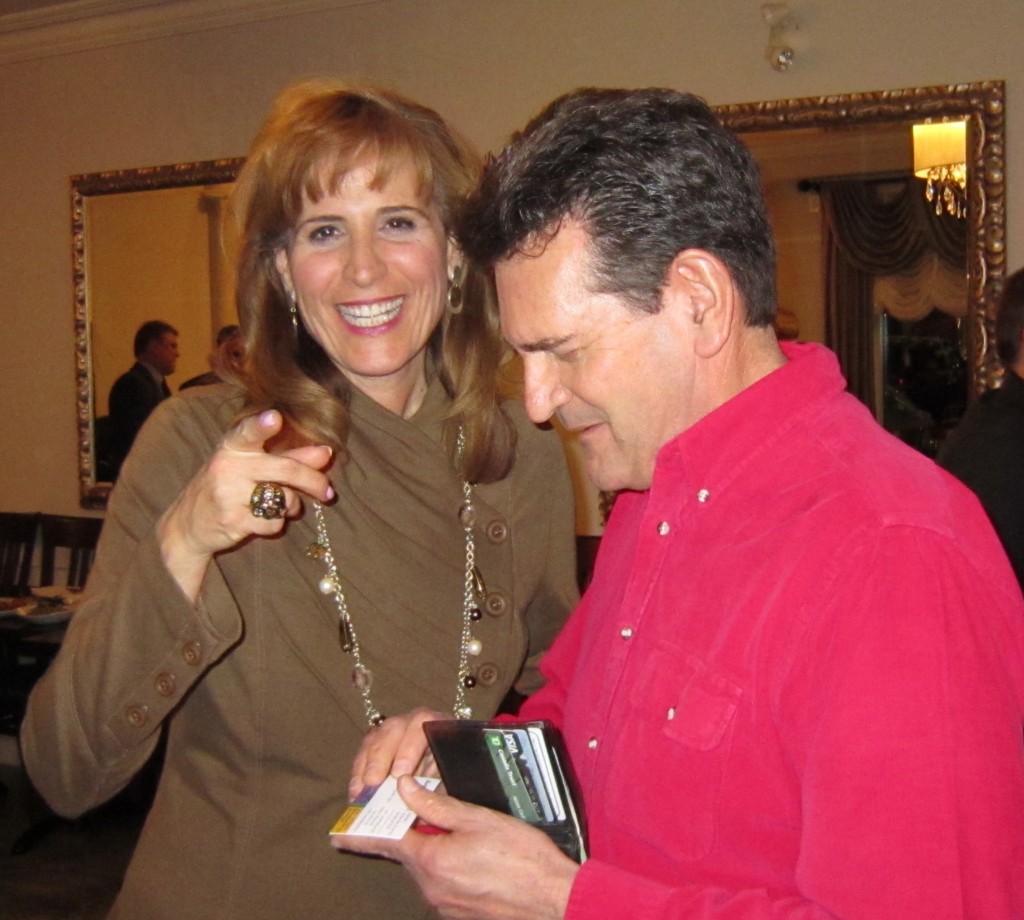 Ward 1 Councillor Rick Craven digging out a business card for provincial Liberal leadership hopeful Sandra Pupatello. Craven at the time was considering a run for the provincial seat. I will not engage in an online debate with you since both of you seem to have more time than I do – and since the City has not received a formal redevelopment application yet.
Having said that – you should know that I personally met with the owner of the hardware store yesterday to discuss his situation. We all want to keep the hardware store if possible.
Otherwise, I find both your comments to be overly negative and lacking in long term perspective and vision.
Thanks again for writing.
Muir isn’t prepared to let the member of council for the ward off quite that easily – replies with: (Muir tends to write long – brevity is not his strength).
We all have the same 24 hour days and 7 day weeks.
I have so much experience dealing with this stuff I was able to write what I did in 20 minutes. Greg likely wrote his piece in 10 minutes, as he has been telling you this for years, as have I. I have large file folders with many such attempts to be heard.
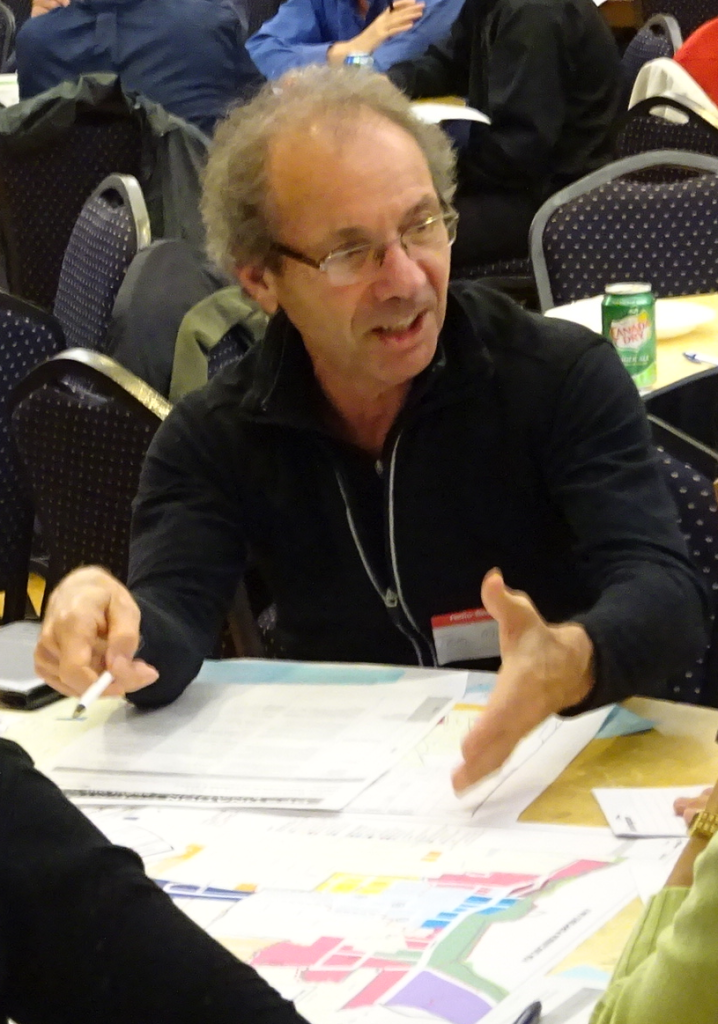 Tom Muir The city, Mayor, Planning, and you are always soliciting comments and engagement in all kinds of things, and that takes time, lots of it and more, but you complain if we take the time to respond, because you say you don’t have time?
So like I said, respectful listening and attention is not something I expect to receive from you, so thanks for proving my point.
Since you are not on for an on-line debate – frankly, I’m not either, as what we are telling you, and much more, is factual, and is beyond debate – I suggest we all get together, especially to debate your personal long term perspective and vision. I would like to do a reality check of your assumptions.
I hear vagaries about it at every meeting, as you tell us what you say is going to be done regardless of what we think, but these don’t provide an opportunity to have debate and discussion between us all. As I recall from many meetings, you don’t have many people who aren’t concerned about the same things, have similar views, and they express them.
So how about a real debate on this?
Anyways, regarding long term perspective, and vision – this is philosophy of science. The long term perspective, or future, is what the present becomes as we make our decisions and actions real concrete step by step.
Using our capacity for conscious foresight, our ability to logically simulate the future in imagination, is what we are using to tell you what we think is happening in concrete terms, and where it will logically lead.
We don’t lack a long term perspective, we have a very well founded one, based on fact based reasoning, logical outcomes, and where this leads to. Where is your reasoned argument?
You say we are overly negative, but we are telling you facts about reality, proposed changes, and how they are being lined up, and what they lead to.
This leads to something negative in our minds, different from what you say, and not a future we want.
But when we look for you to show the same kind of thinking, you don’t get past the more people part, forget the past consequences as concrete examples of our concerns, like what Greg and I wrote about, and you just tell us it will all work out, so don’t worry, be happy.
The staff do the same thing – they say; remember the plan goes to 2031 or 2040, so who knows how things will happen, they say. No comfort at all.
 It’s a 25 year plan that sets out the strategy for our growth. To get to 2040 we have to move through all the years between here and there, where you say the good things we already have, that we are going to lose along the way, will somehow mysteriously re-materialize, in ways you have no explanation for.
Well, we know that if you do certain things, other things will logically follow. We can see that it happened in the recent past, and the same mechanisms are still in action and will lead to more of the same. Greg said, and I agree, that If you think applying the same policies for the next 5 years reverses the negative trends he cites, I’d say you lack the ability to perceive reality.
Greg suggests several constructive and practical things, including requiring fully functional commercial on the first floor of every new building, as he describes, and has provided more details on elsewhere. This is not about opposing development, but making it work for all functions, and for all people, not just the landowner and developer.
If we really are, as staff emphasized, in a paradigm shift, then let’s internalize and generalize it all across the plan. Not just density of people, on every parcel, but accompanying density of uses and functions.
Not just more people, more density, less meaningful commercial and retail, less trees and green – try for that on the south side of Plains when condos in the pipeline and more want to sprout – and more traffic congestion, because more people density means more car density, and the walk-able necessary commercial spaces, frequented often, are gone.
It’s elementary. So how about a real debate on these things, face to face? The meetings we have are not enough.
Where will all this go?
Nowhere but Craven must have begun to realize that these two are not going to let this issue die a quiet death.
Stand by.

 By Pepper Parr By Pepper Parr
June 11, 2017
BURLINGTON, ON
It was billed as her annual BBQ – which she called a Chat and Chew – held at the Lions Park in the downtown core where most of her strength exists.
Held on a Friday evening – seemed like a good time. The weather was as good as it gets.
 Figuring it out. It was a large site and there was plenty for the kids to do including a pony ride.
There were information booths galore.
There was free food courtesy of Turtle Jacks.
There were pieces from what we call the Gazebo willows available for those who wanted a keepsake.
There was a fire truck and a police car.
But there was no buzz – no sense that anyone was having fun.
It was certainly a political event – that’s what these things are and held where her political strength exists but ward 2 city Councillor the Marianne Meed Ward’s event seemed to be missing something.
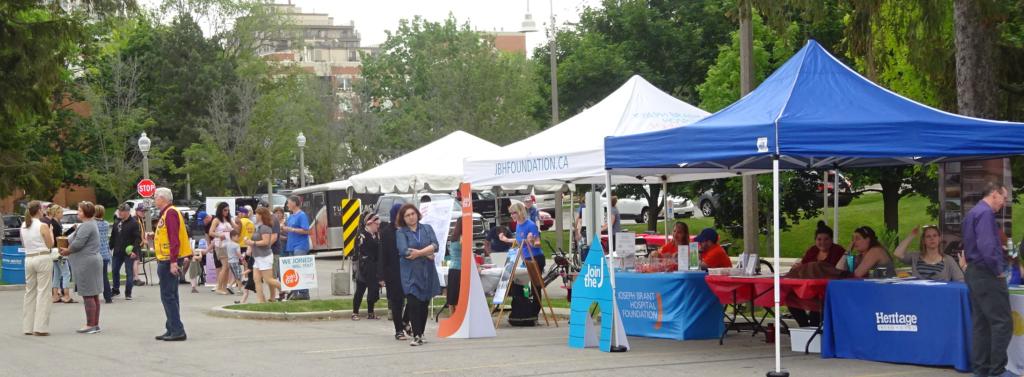 There were information booths galore – just didn’t seem to be a lot of people walking around. The Gazette didn’t make use of the event to engage the Councillor in conversation – we were there to observe.
Was there any political fallout from the school closure decision the Halton Board of Education made to close two high schools earlier in the week?
 Ward 2 city Councillor Marianne Meed Ward at her Chat and Chew community event. Meed Ward will get credit for ensuring that the high school in her ward didn’t get the chop; she is also getting some blowback for what some described as a conflict of interest in serving on the Program Accommodation Review Committee (PARC ) that was involved in whittling a 40+ school closing recommendation down to five – one of which was Central high school.
When the Director of Education submitted his original school closing recommendation his top choice of the 19 options he and his staff came up with had the closing of Lester B. Pearson and Central high school at the top of the list.
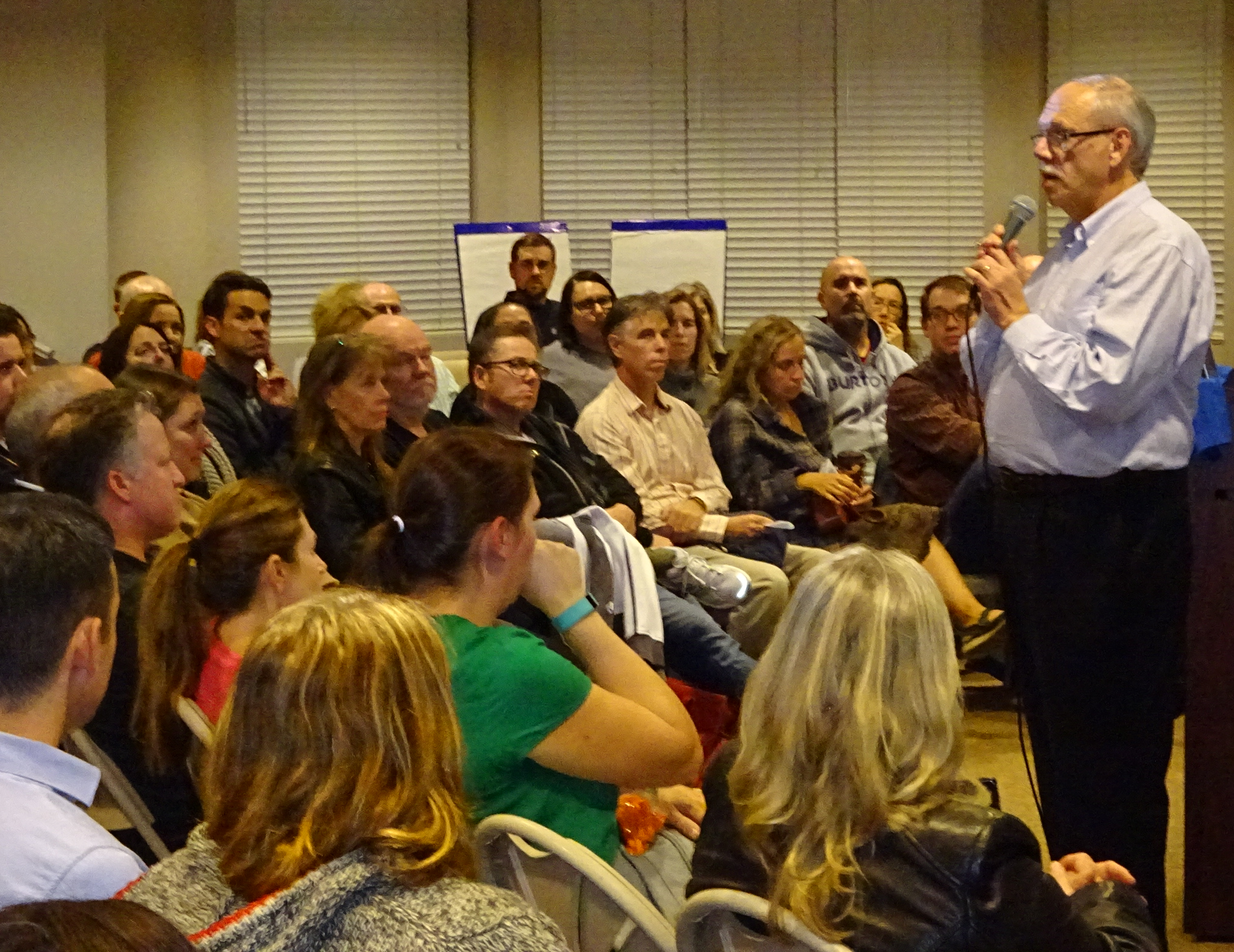 Terry Ruff former Central high school principal speaks to the first meeting of parents telling them how he two previous attempts to close the school failed. That announcement mobilized the Central parents who left no stone unturned in their drive to get their school off that list.
Once the Director’s recommendations were public the PARC was formed and Central high school chose Meed Ward to represent them. There were howls of protest about a conflict of interst. Meed Ward had a son at the school and she was asked to take on the task.
She brought formidable political skills to the work she did.
The Gazette attended every meeting of the PARC and found Meed Ward to be much less effective at the PARC than she was at city Council meetings.
There were times at city council when Meed Ward was close to brazen, which we see as a plus. She was focused and direct and asked more questions than any other three members of city council.
The rest of council often roll their eyeballs when she asked for yet another recorded vote.
We didn’t see the same kind of energy during the PARC meetings.
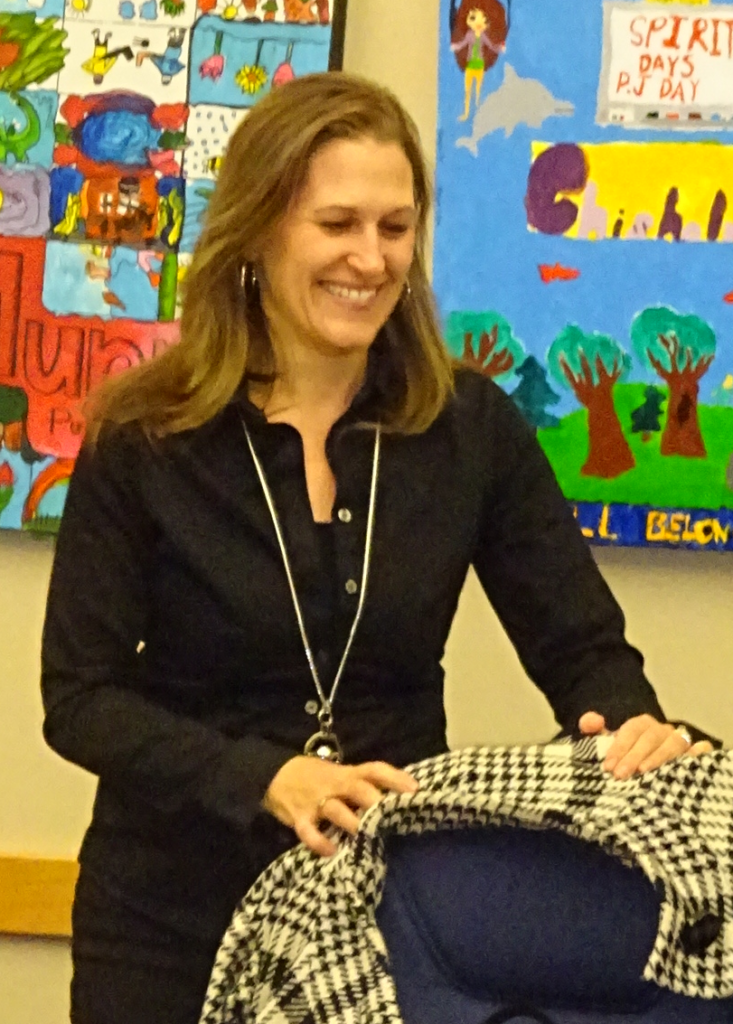 Marianne Meed Ward at one of the seven PARC meetings. The Director of Education, Stuart Miller did change his recommendation from closing Central high school and Pearson high school to closing Bateman high school and Pearson.
Many howled at that change and argued that it was influence from Meed Ward, a member of city council and the Burlington MPP Eleanor McMahon that swayed Miller.
Stuart Miller changed his mind when he saw all the evidence that was collected and put forward by the Central high school parents. Meed Ward didn’t have any undue influence – she was part of a team with formidable skills that they put to excellent use.
They were creating teams and assigning tasks days after the school closing announcement was made. The held a silent auction fund raiser and pulled in $14,000 which allowed them to print up signs that were on almost every lawn in the ward.
They demonstrated and they did their homework. They figured out that it was going to cost $400,000 every year for the foreseeable future to transport the Central high school students to either Aldershot high school or Nelson high school.
$400,000 a year – every year was a stunning number – that was only going to go higher as transportation costs rose.
 The distance Central high school students would have to travel if Central was closed and they were transferred to either Nelson or Aldershot high schools is 6.4 km; the distance between Bateman and Nelson high schools is 1.9 km. The disruption to student extra-curricular life for the students would be immense.
If Central high school was closed their students would have had a 6.4 km trip to either Aldershot high school or Nelson high school. If either Bateman or Nelson were closed those students would have a 1.9 km trip – many would be able to walk to school.
The map and the rationale Central parents provided was one of the most compelling arguments for not closing that high school. The Burlington Downtown Business association put forward a strong argument for keeping the high school open as well.
Most of the points the Central parents made seemed rather obvious when they were looked at closely and on wonders why the Board of Education staff didn’t see what the Central parents discovered.
The Central parents challenged almost every decision the Board staff had made; they missed nothing,
The decision to close Bateman instead of central was made. Central is really in very rough shape physically – mostly as the result of neglect, is going to need a lot of money to be brought up to an acceptable standard. It has an acceptable bit of charm and a lot of history going for it but when compared to what Hayden has got – Central pales in comparison. It is what the Central parents are prepared to accept or have accepted in the past.
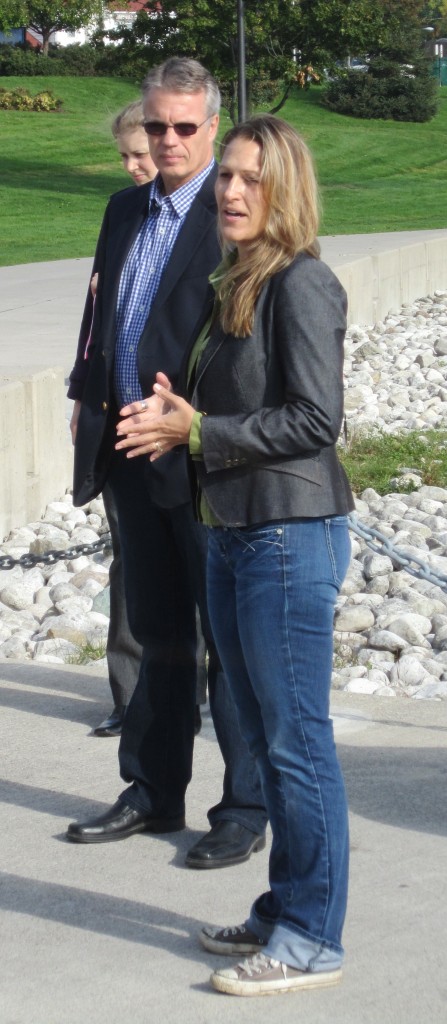 Meed Ward with Mayor Goldring: she is more comfortable with herself as a speaker and she wants his job 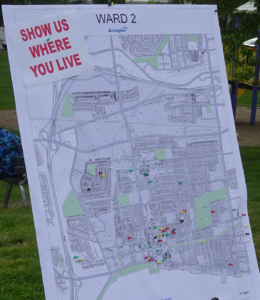 There just didn’t seem to be a lot of people. Meed Ward has an almost tribal relationship with her constituents – they don’t all think she walks on water but they see her as the member of council that works hard for them and has a vision for the city that other members of council don’t have – including the Mayor who Meed Ward has always wanted to replace.
When she was running for the city council seat in 2009 she wanted the job of Mayor when Can Jackson had it.
For reasons that are not all that clear she chose not to run against Goldring in 2014.
There was a point at which there was little doubt that she was going to run against him in 2018; there now appears to be some doubt.
Were she to remain a city Councillor she would win the ward hands down in 2018 – is the rest of the city ready for her as Mayor?
There are hundreds of them in ward 5 that will campaign actively against her – with a little help from the sitting council member Jack Dennison who is giving every indication that he will run again in his ward, Meed Ward may not be able to pull off a majority of the vote in that ward.
Is the dis-satisfaction from some over the role she played on the PARC going to hurt her longer term political aspirations?
They well might.

 By Staff By Staff
June 10th, 2017
BURLINGTON, ON
Parents with an interest in what has happened to the two high schools that are going to be closed by the Halton District school Board are beginning to voice their concerns.
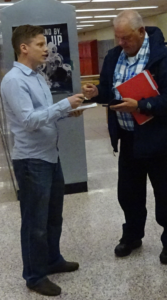 Rory Nisan, on the left, a Lester B. Pearson alumni who credits the small enrollment school with much of his career success. Rory Nisan, a Lester B. Pearson alumni, takes issue with the explanation Burlington Ward 3 and 6 trustee Andrea Grebenc released yesterday.
“She is adamant about 1000 being the necessary number of students” said Nisan. “This is the crux of her argument for closing our school. However, are mega schools optimal, especially when they are way over designed capacity?
“Absolutely not. They are a far worse scenario than having all three schools at 800-plus students, which is easily achievable (we provided her with the data and a clear plan for this).
“Simply giving back the students that were taken away when Hayden opened would fix the problem. Her vote guarantees that MM and Hayden will be well over capacity for many years if not indefinitely.
“She knew this when she made her decision.”
Nissan adds that Grebenc says there “seemed to be more course conflicts than students”. These are empty words. They don’t take into account that the student experience would have been greatly enhanced with 800 students, a number that is easily achieved by bringing Hayden’s capacity down to appropriate levels.
“She also knew this when she made her decision.”
“She notes” said Nisan that “all of the extracurriculars in which she participated as evidence of how much she loved Pearson. However, with MM and Hayden becoming two mega schools with over 1400 pupils each in 2021, students of those schools will have far fewer opportunities than she did.
“She knew this also.”
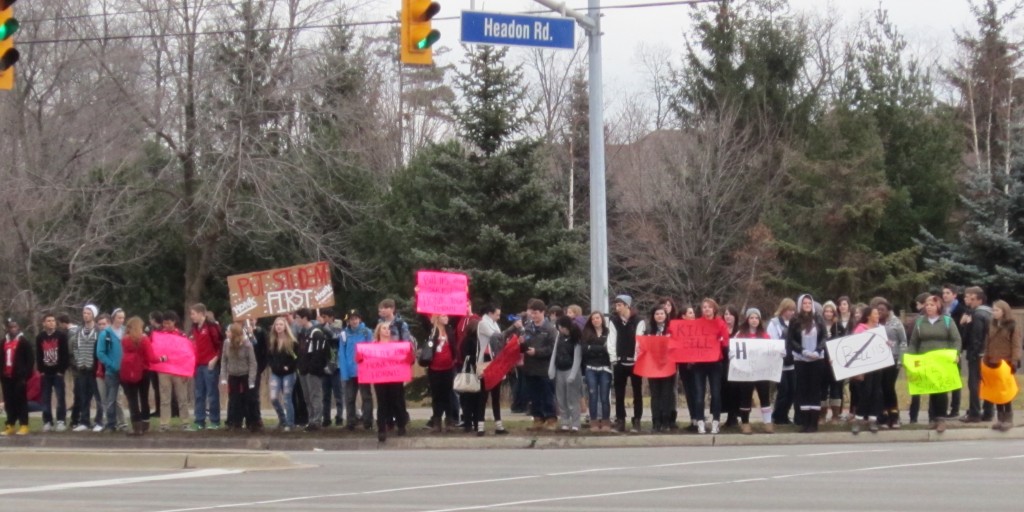 Lester Pearson parents demonstrating at Upper Middle and Headon Nisan, using the material Grebenc provided said that “Again, 1000 students is the minimum, she says. But she voted in favour a dual campus solution for Bateman even though that school only has 747 students (2017).
“Why didn’t she support (or even show any consideration of) a dual campus for MM and Pearson? Why is she more innovative in thinking about Bateman than a school that so many of her constituents have a stake in?
“She knew this was a possibility, in addition to giving Pearson some of Hayden’s students, when she made her decision.”
The 1000 student target that Grebenc appears to see as close to optimum “is not supported by any data that came forth through the entire process. Pearson was never meant to have 1000 students. Several other schools in Burlington will continue to have significantly less than 1000 students after this process is complete. She never mentioned closing any of them” said Nisan.
“She knew this too.”
“She notes that there were 1000 students when she was there because she went through her yearbook and “counted every face”. She fails to mention that there was OAC (grade 13) when she was a student.
“I went through my yearbook (1998)” said Grebenc in her statement. “Pearson was a bustling school that year. The porto-pac was packed. Our sports teams were solid, and I don’t remember ever having a course conflict.”
 The high school will have emptied parents cast ballots in the October 2018 municipal election. Guess how many grade 9-12 students there were? asks Nisan: 686. Another 151 OAC grads rounded out the student body.
“She had these numbers at her fingertips when she made her decision.”
Trustee Grebenc’s short intervention used the word “I” 34 times.
Trustee Grebenc’s statement, filled with rhetoric and hyperbole, and devoid of any data or arguments that passes even superficial scrutiny, was a failure” said Nisan.
“Our students will have to pay the price.”
Related article:
Why Grebenc voted against keeping Lester B. Pearson high school open

 By Ray Rivers By Ray Rivers
June 10th, 2017
BURLINGTON, ON
Rivers and his wife are on a volunteer teaching course in Ukraine. As part of this trip he will be visiting a Canadian Armed Forces Base and reporting on part of Canada’s role in that part of the world.
He will return at the end of June and give Gazette readers his take on all the changes that are taking place in this country at both the federal and provincial levels.
It’s why treating your children to French Immersion will not make them bi-lingual. They need to sleep with the other language, as a former Canadian bi-lingual commissioner once mused. You need to be able to live it, to experience it. So that is what I’m doing over here in Ukraine – helping Ukrainian children to live extemporaneously in our culture. And I’m not alone. There are over 600 volunteer teachers from 140 countries, including a former Russian, all participating in an initiative called GoCamps.
When the Soviet Union collapsed, Ukraine declared its independence, along with all the other Soviet republics. But 70 years of communism had created a culture of passive dependency such that the new nation was reluctant to embrace the changes needed for it to become a fully independent state. That would require abandoning the Russian symbols of authority, its language and religion in particular.
From the Tzars to today’s Vlad Putin, Russia’s leaders have tried to eliminate the traditional language and culture in the lands they occupied. And Ukraine was no stranger to that policy. Ukrainian is a slavic language similar to Russian in that it is based on the almost cryptic Cyrillic alphabet, where the B is a V and the N is a P and the P is an R and the number 3 is a letter. It is very confusing and difficult for we English speakers, and I’m sure the opposite is true.
 Public art in the city of Cherkassy where Rivers is teaching Engish I’m teaching in the industrial city of Cherkasy, some 120 kms south of Kyiv on the expansive Dnieper River. Of the 300,000 people living here it is difficult to find anyone on the street who can speak more than a few words of English, which was likely learned from a TV show or western pop song. Most street signs and restaurant menus, though presumably once in Russian, are almost exclusively in Ukrainian script now, making getting around the city a challenge. Even getting a taxi is difficult since I’ve yet to find a dispatcher who understands either English or my feeble Ukrainian.
Despite that, I am impressed with the high level of English usage among the students at the school I’ve been attending, and their desire to better understand the language and culture that I bring with me. Ukraine’s goal is to eventually replace Russian with English as a second language. I have noticed, in the year since I was last here, how the government has removed Russian language timetables in railway stations – a step in that direction.
There is a segment of the population which would be just as happy to keep Russian but they are becoming a smaller proportion every year and with every new survey taken. It has taken Ukrainians a quarter century to finally decide that they would be better off with memberships in the EU and NATO, something that has held them back from joining previously. It is the youth, the new generation, who more than any others are now making that claim. And for those in doubt about the critical need to improve national security they only need consider what happened to Crimea.
Protection of the Russian language became the official raison d’être for the annexation of Crimea and the invasion of Dunbas, in south-eastern Ukraine. Yet despite an active war, ongoing in the east of the country, which has killed over 10,000 people, it was hard to sense animosity towards Moscow. In part that may be due to the long fraternal and historical association between the nations. It might also reflect embarrassment at having failed to defend themselves from the people they once believed were supposed to be their friends, even family.
 Ukraine is a politically sensitive part of the world. Russian navy ships moored in the bay of the Crimean city of Sevastopol, Ukraine. Assault teams in speedboats and helicopters have captured a Ukrainian ship in Crimea and moved it to Russian military port  Sevastopol is not that far away from where Rivers is teaching English to Ukrainians. There are five million ex-pat Ukrainians living in Russia and for those who can still recall living in the USSR, the border is an inconvenience. Despite the murderous aggression of Mr. Putin’s crowd, Ukraine still buys some goods from Russia, like uranium for its Soviet built nuclear power plants. And given the degree of Russian espionage and attempted sabotage in Ukraine it is bizarre that ordinary Russians still have visa-free access.
I met a young woman from Cherkasy who was completing her master’s degree at an oil and gas technical college in Moscow. For her the future was about working and living there, given the dim economic opportunities she sees in her home town at the moment. She was having to take the train back to Moscow since the airlines have mostly stopped flights there on account of the war.
For her it’s like that war is with somebody else as she continues business as usual in Russia, a nation where half the people consider Ukraine enemy number one and who are responsible for the death of thousands of Ukrainians. It is hard to fathom how her desire for a good education has overtaken what I’d consider her patriotism. It is odd that there seems to be no concern by her family or friends over her personal security in a Russia that regularly imprisons Ukrainian nationals for crimes called extremism, as it did recently with the chief librarian of the Ukraine Library in Moscow.
I met a family displaced by the conflict in Donetsk and forced to move personal and presumably business interests to the nation’s capital in Kyiv, leaving home and property behind. I would have expected outright anger and outrage, but none of that was apparent in our discussions. And even when the discussion came up there was a puzzling reluctance to blame the Russians.
 Political demonstrations are a lot more robust in Ukraine than anything we see in Canada Ukraine’s history as a nation predates much of Europe, and by centuries Russia, its ungrateful birth child. Its fertile productive valleys and plains have made it the object of conquest. Once a powerful monarchy Ukraine’s invasions, first by the Mongols, then by various other nations, including Austria, Germany, Turkey, Poland and Russia. And given its endowment, agriculture is still the life blood of the nation, generating the greatest export revenue.
Unlike Russia which is geographically more Asian, Ukraine has always been a European nation. And Ukrainians are slowly, too slowly for many now, coming to a consensus that their future, national security and pathway to prosperity, like that of neighbouring Poland, lies in the EU. And for that, in addition to retaining their own rich language and culture, they need to communicate and share the languages of with their new western partners and English above all.
…….to be continued.
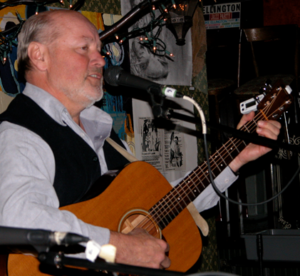 Ray Rivers writes weekly on both federal and provincial politics, applying his more than 25 years as a federal bureaucrat to his thinking. Rivers was a candidate for provincial office in Burlington in 1995. He was the founder of the Burlington citizen committee on sustainability at a time when climate warming was a hotly debated subject. Tweet @rayzrivers Ray Rivers writes weekly on both federal and provincial politics, applying his more than 25 years as a federal bureaucrat to his thinking. Rivers was a candidate for provincial office in Burlington in 1995. He was the founder of the Burlington citizen committee on sustainability at a time when climate warming was a hotly debated subject. Tweet @rayzrivers
Background links:
GoCamps – Russia and Ukraine – Russian Speakers – Ukrainian Language –

 By Pepper Parr By Pepper Parr
June 10th, 2017
BURLINGTON, ON
Burlington Ward 3 and 6 Halton District school Board trustee Andrea Grebenc released a statement on her Facebook page setting out why she voted the way she chose to vote at the Board of Education meeting on Wednesday when trustees decided to approve the recommendation to close two of Burlington’s seven high schools.
 Andrea Grebenc in conversation with Director of Education Stuart Miller “It has been a tough few months” she said “and I know many of you are upset with the outcome of the Program Accommodation Review (PAR). I wanted to let you know that I explored a number of options myself and I was willing to go down the road with respect to a dual campus/one school concept and getting community partners to help fill space in the school.
“I could see the Bateman campus as a truly vibrant community hub. I believe in community hubs and schools should be an integral part of them. I think in this day and age, few people even know their neighbours, therefore providing gathering spaces to provide a true sense of community is important.
“The special education students at Bateman would have had the opportunity to integrate even more with a broader community setting. The north has three community centres. South East Burlington has one community room along with scattered amenities (pools, ice rinks, stadium and park). I believe community hubs should be cradle-to-grave types of places with programming for pre-natal and pre-school, through school ages, youth, adult and seniors programming.
“I took information provided to me from your community and spoke directly with administrators at two dual campus schools in the west. Both schools had similarities and differences to the Nelson/Bateman situation. The administrators were frank about the experience. It wasn’t a perfect solution, it took extra work, but both schools were successful.
“Unfortunately, my colleagues could not see this happening. Community partners were not forthcoming which was the linchpin to make this work. They would take up the On the Ground capacity to make financial sense. I was hoping the city would have stepped up during the final weeks with some possibilities as they are a natural partner and have partnered with us in the past(Hayden/Haber/Alton Library and Kilbride/Public library and community room).
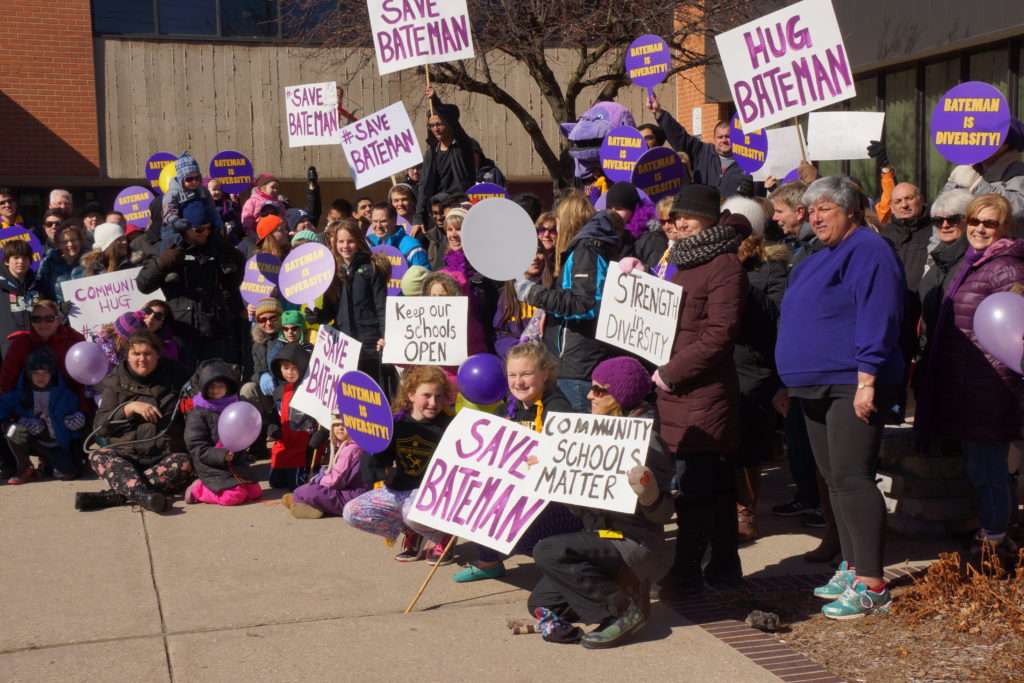 Bateman high school parents demonstrate to save their high school – it wasn’t enough to change six minds. “When Trustee Collard’s substitute motion about exploring dual campuses failed, I had to support a closure. As I mentioned during statements later in the meeting with regards to Pearson, my research informed me that schools need 1000 students to provide students decent course choices and extracurricular experiences. Without putting Nelson into the same lower enrollment state, Bateman needed to close.
“I care about the students in special education placements residing at Bateman. I promise to hold the Director accountable in his statements that situation at Nelson will be better for those students than what they have now at Bateman and that special care is take with each student transition. It is my duty to make it so and my commitment to the community.”
Bateman high school is scheduled to close in September of 2020.

 By Pepper Parr By Pepper Parr
June 7th, 2017
BURLINGTON, ON
They will convene at 7:00 pm this evening and begin the debate on what they as trustees think is best for the citizens of Burlington.
The 11 Halton District School Board trustees have been working through a process that began last October.
They decided then that they should create a Program Accommodation committee to consider the recommendation from the Director of Education that some of the Burlington high schools be closed. Which schools was the issue.
Each high school in Burlington nominated a parent to serve on the Program Accommodation Review Committee and the Board selected one person from a list of people who expressed an interest in serving on that committee.
The PARC met on seven occasion to review the 19 possible options Board staff had prepared. The Director of Education felt that the best option was to close Central high school of the Lester B. Pearson high school.
The PARC was not able to arrive at a consensus but they did narrow down the 30+ options they had in front of them down to five.
One was to close Central and Pearson; another to close Bateman and Pearson, another to not close any schools.
For reasons that will take some time to determine, the PARC members chose to fight with each other to ensure their school was not closed rather than work as a collective and ask the Board to provide more information.
The information given to the PARC members kept changing – enrollment numbers were suspect from the beginning and the source of some of the information was never all that clear.
For the most part every school was well represented at the PARC level. The PARC members were not served very well by Board staff or by the firm brought in to do research and facilitation.
The public that took part in the process grumbled throughout. The Central high school parents were able to organize very effectively from the moment the initial recommendation was on the table.
The second recommendation took Central off the table and replaced it with Bateman high school who then had to scramble to get their story out.
Parents were livid when they learned that the views of the classroom teachers would not be available and that any response from the high school students was going to be very limited.
With the PARC disbanded – it was time for public delegations. There were 51 of those – which Bateman used very effectively to get their story out.
The delegations were followed by an ”information” meeting during which the trustees had ample opportunity to ask questions – there were few questions that could be seen as digging very deeply.
The interesting part was that it took two meetings to get through all the question asking. Of note – there was just the one trustee who came forward with alternatives.
That is all water under the bridge. Even though there has been some last m8inute data that is very relevant – it will be up to the trustees to put forward motions, debate them, revise them and then vote on them.
Will we know Thursday morning what is going to be done? We will know something.
Will the trustees take up the motion that trustee Collard is certainly going to put forward which is to merge Bateman and Nelson. Should that happen – and it isn’t a bad idea – what would the new two campus school be named? Is the Nelson community ready to give up their name? Don’t bet on that one.
Will the parents accept whatever decision is made or will they seek a Ministerial Review?
Given the serious problems with much of the data and the pace at which the community was forced to march to the beat of a drum beaten by Board staff, the best solution the Gazette arrives at it to not close any schools and to create a task force made up of parents for the most part who would put together a solution that meets the needs of every student current and future in the city.
Steve Smith and Tom Muir served the city very well with their consistent contributions to the process. Armstrong said “it’s amazing how many ideas are coming at the last minute …this process is flawed if for no other reason than there isn’t time to build a cohesive plan”
The Board of trustees have more than enough information to agree with that assessment – they should vote for option # 7 – don’t close any of the schools – and defer a decision for at least two years until there is better data available.
In the immediate future the trustees should direct Board staff to give Pearson high school the feeder schools they used to have and lessen the capacity overload at Hayden.

 By Steve Armstrong By Steve Armstrong
June 7th, 2017
BURLINGTON, ON
Throughout the PARC process there was a continued refrain that larger schools enable more opportunities.
 Steve Armstrong What has been lacking is any concise quantification of this. I’ll share what I have been able to piece together from the data available.
One discussion point surrounded the issue of timetable conflicts. The premise being smaller schools have fewer sections available in combination with fewer course options.
The graph below represents the data from all high schools in Halton. On first viewing the downward trend as we go to the right indeed confirms the notion that larger schools have fewer timetable conflicts. I’ve indicated the overall conflict rates for each of the 4 municipalities on the left hand side.
 One question I asked, but never received an answer on, concerned the three schools circled at the bottom of the chart set out below. One question I asked, but never received an answer on, concerned the three schools circled at the bottom of the chart set out below.
What is it about those three schools, Blacklock, Oakville Trafalgar and Garth Webb that enables them to have such low conflict rates?
My suggestion is that you might be able to apply that knowledge within the rest of board and achieve dramatic improvements on this metric. Improvements that making schools larger alone will not achieve.
Focusing just on the seven schools in Burlington I’ve added a pair of trend lines to model the data points. The resulting equations create a model for predicting the outcome of various changes in enrollments.
Having such high R squared values (1.0 is perfect) simply means the equations do a very good job of fitting the data, and that enrollment explains most of the effect being modeled.

In use what the model predicts is that when looking at changes to enrollment at any school the outcome will fall on these dashed lines.
We can also clearly see that when enrollment is less than about 800 students the impact of enrollment changes is about 5% per 100 students. Above 800 that rate of improvement drops to 1% per 100 students.
As total enrollment grows the conflict rate is expected to drop from the current 23% down to about 20% without closing any schools.
The current recommendation to close two schools would result in the conflict rate dropping to about 16%. A number that would still be twice as high as observed in Oakville, despite heavily disrupting two communities.
Larger schools are also expected to have a greater number of course offerings, and as the next graph shows this is generally a true statement.
 The data presented was taken from the SIPs (School information profiles) provided to PARC members, and does NOT include online courses. The data presented was taken from the SIPs (School information profiles) provided to PARC members, and does NOT include online courses.
I’ve drawn in 2 dashed trend lines that are best fits to the data in two overlapping regions.
The blue curve very nicely models the course offerings for schools with under 800 students, and says there is a strong benefit of adding students. The slope tells us that for every 100 students added we would expect 14.9 more course offerings. Since the core courses are already included in the base amount for every school, these would be expanding the options for elective courses.
The orange line provides insight for schools over 600 in size. The effect of adding 100 students is a much smaller 1.78 courses. As an effort to improve on the accuracy I did take a stab at adding data I found for a couple of the other larger schools in Halton. The results did improve the R squared valued (indicating better predicting power), and lowered the benefit to a little over 1 course per 100 students. Since I couldn’t determine if that data was measured in the same way as what was provided by the Board I decided to stick with the known source information.
So, what does this model tell us?
It tells us that for a school to offer a good number of courses we need a critical mass of around 700 students.
For smaller schools, there is significant benefit in increasing the number of students. We would expect 15 new courses per 100 additional students, up to an enrollment of 700. Above critical mass there is a much smaller increase in course options, only 1.78 new courses per 100 new students.
This asymmetry becomes a useful tool when contemplating re balancing enrollments.
For instance: Suppose a boundary change was made between Nelson and Bateman which results in 100 students being relocated to Bateman. Bateman students would be expected to experience an increase of 15 new course offerings. The loss of 100 students at Nelson is predicted to result in loss of only 2 courses. In practice, if the LTAP predicted growth at Nelson of over 100 students by 2020 was instead directed to Bateman then Nelson students wouldn’t likely even see a reduction in course offerings, they just wouldn’t see any increase over what they presently have.
Likewise, suppose 400 students were redirected away from Hayden bringing todays enrolment down to 100% of capacity. Hayden students would see a reduction of only 8 courses, probably less. If Pearson were to receive 250 of those students then its course offering would rise by around 38, and Robinson could also add a number of courses, but given their high course count already may choose instead to lower timetable conflicts. Clearly bringing the overcrowding at Hayden under control by changing boundaries or moving programs would significantly improve all 3 schools.
By combining the perspectives provided by both the timetable conflict data and the course option information much more can be understood about enrollments over a much broader range then a simplistic less than 600 students, greater than 1000 student view of things.
Both perspectives indicate stronger benefits for increasing school enrollments up to around the 700‐800 range.
Below that critical mass the focus is on adding course options, above that point the focus is on adding more sections, which continues to reduce timetable conflict rates. This plateauing on the course options side is inevitable since the Ministry of education has a finite number of courses that can be offered.
With further work this modeling could be improved.
Related article:
Another example of where parent involvement made the difference.
Editor’s note: Steve Armstrong is an engineer. He was a PAR Committee member representing students from Lester B. Pearson high school. One wonders what the Board o Education Planning staff will do with this data.

 By Tom Muir By Tom Muir
June 6th, 2017
BURLINGTON, ON
I cannot delegate personally at the June 7 Board meeting, so please accept this written delegation for the record.
Accountability of the Trustees and Board
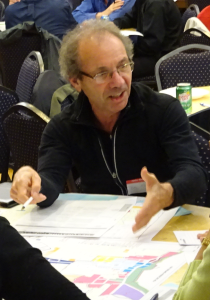 Tom Muir You know the time is coming for the Trustees to make decisions about the Board Director’s recommendations about Burlington’s community of schools. In this, it is time to treat the parents, residents, students and community with respect and truth.
It is time for the Trustees, as democratically elected officials, to be accountable to your constituents. The Education Act provides clarity about the responsibility of individual trustees to bring to the board the concerns of parents, students and supporters of
the board.
It provides for the responsibility of the trustees to work with the values, priorities, and expectations of the community to translate them into policy. It is incumbent on trustees to act with integrity, which means with honesty and strong moral and ethical principles.
All the trustees are responsible for the best interests of all students – this means that all trustees are accountable for their actions in regard to Burlington schools, not just schools in their area.
Trustees play an essential role in creating the conditions for: achieving excellence in student learning; ensuring equity and promoting well-being and; enhancing public confidence in publicly funded education.
Enhancing public confidence means ensuring accountability for the use and effective stewardship of resources and public school assets.
My expressions of comment and concern
You also know that I have written you extensively, and provided a great deal of information about the PAR context and process, and my concerns that arise from the factual nature of that, and how the Board actions and behavior is reflected by that body of evidence.
Based on this evidence I have provided over the history of the PAR, and events emerging, it is quite clear that the Board has created an outcome of systematic, conflict-based crisis in Burlington schools and community. There has been an evident failure to enhance public confidence throughout the PAR process.
There have been record numbers of complaints, delegations to the Board, picket lines, demonstrations, protest marches to the Board office, delegations to provincial parliament, complaints to the local MPP and the Minister of Education, testimonials to Burlington schools, and the list can go on as you know.
It seems clear that the failure of the Board to manage and achieve the critical goal of effective utilization, by building what are almost all surplus seats at Hayden, is seen as the root of the present crisis, and conflict, by a large majority of people.
This is the unhealthy, even pathological, consequence of the predominantly defensive strategy used by the Board to control, manipulate, deny, and distort the reality underlying the emergence of the conflicts.
This defense, as offense, is based on the theme of redefining truth, and sticking to the script.
The fact that I had to resort to a Freedom of Information request to get any information at all speaks loudly to the controlling and obstructive manner with which the Board and the Director chose to communicate with residents.
Directives, based on the Education Act, and Guidance documents, state that in carrying out its accountable responsibilities, a board must engage in effective communication with school staff, students and their families, community members, and others. In my experience, and that of others I know of, there was a deliberate failure to engage and communicate on critical matters of facts and truth.
I never received any reply from anyone to my several sets of correspondence and requests for information (other than my FOI), except acknowledgements of receipt and thanks from one trustee to all memos, and similar replies from one trustee to just one memo.
The only effective outcome for the Board was to continue a cover up of the problems asked about for as long as possible. Even my FOI request and response was obstructed, in information provided, and timing.
What is the correct and truthful source of the crisis and conflict?
As I have shown conclusively, with official data, the crisis we face was caused by deliberate and knowing actions by the Board to build the NE Burlington school (now named Hayden) capacity that was not needed based on enrollment trends and utilization expected. The data prove that this is the planned and only cause of the current utilization issues in Burlington schools.
There was no business case in the normally applied manner based on sufficient need for pupil places in excess of seats available, and growing for the foreseeable future.
And on top of that, the Board is now redefining this truth, by using the resultant low utilization, or surplus seats, caused by these past actions, to support the present PAR now, as Condition 1, having failed to act on the foreseeable consequences of the plans they made to build surplus seats, at the time of the planning.
And compounding this, the logic of PAR Condition 2, “that reorganization involving the school or group of schools could enhance program delivery and learning opportunities” is rationalized to follow the lower utilization, as the Board states now, in the present, but failed to, in the past, when it was first created in the plans for Hayden.
This, in fact, reflects another failure to act, by the Board, on the additional foreseeable consequences of the plans made at the time of the planning – failures to act in a responsible, transparent, and accountable manner, pure and simple.
The board is responsible for setting policy relating to facilities, including: maintenance, acquisition and disposal of sites; building renewal plans; and site operation. All policies relating to facilities must first take into consideration requirements related to the achievement and well-being of students of the board.
Despite repeated comments and requests for explanation, I was never able to get the Board to provide such an explanation as to how it included in the Hayden planning such “consideration requirements related to the achievement and well-being of students of the board.”
This means that the decision to build Hayden, and the surplus capacity that it entailed, creating lower utilization in Burlington, would also lead to diminished program delivery and learning opportunities, reduced equity and well being, and less achievement of excellence.
Clearly, if it does this now, then logically, it would have done so then, as part of the plan.
More to the point, these impacts were perfectly predictable, as they would follow from the utilization effects built into the Hayden plan, which they did clearly, and are now present.
As well, and doubly ironic, nowhere does the Board acknowledge the predicted overcapacity occupancy of Hayden now, as a problem in its own right, but contributing to the lower utilization of the other schools, and thus an option to partially relieve that situation.
These outcomes are what the Board is telling us now, through this PAR, will emerge from the lower utilization caused by building Hayden, and so we have to close two schools to correct the surplus they created.
This is used as rationalization for the PAR, and to further entrench the fabricated alternative reality created by the Board, that is creating the conflicts and crisis, and to try and evade being accountable for these actions.
This is the redefinition of truth that the PAR is based on, and this is reflected throughout the trustee debate meeting minutes.
Does the crisis and conflict continue despite knowing the buried truth? What’s happening now?
So what is being discussed in the current PAR debates by trustees is the same thing as would have been discussed if anyone had done their job and considered what such outcomes might be when Hayden was being planned and pushed forward, which would knowingly build surplus seats.
The fact is the Board created comparable loss of equity, opportunity, well-being and excellence to students, in the same measure as they claim now as one reason for the PAR. Before Hayden there was no problem with low utilization, and none in the foreseeable future.
Unfortunately, no one, except one or two trustees back in 2008, took their responsibility and accountability seriously, and no one to this day has been called to account for this, and to explain their actions.
Not even in the two debate meetings of trustees was anyone called to account for this. And I have provided a great deal of official evidence to all the trustees, and Director, on this matter, but there is still no mention.
It is on this basis of disavowal of the truth that this PAR process has acquired the potential to be pathological in its impact as an outcome of this deep rooted denial.
Closing two schools in Burlington is certainly pathological. No doubt.
This fact set has been continually repressed, or buried, like a painful and unacceptable thought, and source of anxiety, in a vain attempt to remove it from the PAR awareness.
The Director himself told me that bringing up the Hayden planning and execution would be too dangerous for him politically.
Whatever happened to Ministry guidance about not having conflicts of interest, or letting personal, political motives enter the decisions?
And further, in the debates, the question of why the Director changed his mind about closing Central was raised, and he claimed there was nothing personal or political in that decision.
Then he invoked the untruth that Pearson and Bateman had declining enrollment and utilization trends, when in fact it was the Board building of Hayden that targeted these schools, and others, as the source of students and feeders and programs to fill the surplus seats they built at Hayden, to gross overcapacity.
The declining enrollment and utilization in Burlington schools was created by the Board, and is being sustained for their purposes.
Overall, from the delegate evening I attended, and the minutes of the two evening Board meeting debates on the Director’s final report, the Trustees still appear to be rejecting the fact that they are debating an untruthful reality, provided to them by the Board and sustained by the Director.
The buried truth I described appears as an unacceptable idea altogether, that is incompatible with their image of the PAR, and their anxious struggle to deal with the crisis and conflicts emerging from their distorted reality, refusal to be openly accountable for that, or hold responsible parties accountable by asking for explanations.
They apparently behave as if this defensive denial of the facts, that actually happened, never occurred, and appear as though they are stuck in a Director provided alternative reality and set of alternative facts.
The Director and senior staff are inflexible and intransigent in the debate, sticking to the script of their redefined reality.
What stands out in the debates?
In the minutes of the trustee debate meeting these few, but telling instances emerge.
1. The very first point raised in the debates was;
“A. Collard asked about ways to reinforce programming and boundaries at Robert
Bateman High School. S. Miller indicated initial discussion around the original
recommendation should precede any additional options requiring further
investigation. G. Cullen commented on the surplus that would still exist with a
twinned school concept.”
Mr Cullen was part of the senior management team back in 2008 and forward on the Hayden plan. He knew all about the consequences built in, and flowing from that plan, but there is no record that he ever warned about the surplus seats results built into the plan, or the utilization and program impacts that might flow from that.
But here he is now, making the “surplus” the very first, and only, thing he says in answer to the trustee’s question. No mention of past actions.
I was also surprised that a senior staff member, Steven Parfeniuk, that was also closely and chiefly involved with the Hayden plan and the Ministry on that file in 2008 and forward, as then Superintendent of Business for HDSB, and would know about everything I have raised, was not questioned, or otherwise revealed as present at the meeting.
This suggests to me that the trustees are in denial with staff, and there was no serious effort to get to the truth of how this crisis and conflict happened, and to call out those responsible to be accountable.
2. Much of the May 17 debate content is about implementing the recommendations and school closures, and how the integration, transitions, and general impacts of closures would be handled.
Of course, in a mechanical sense, movements, integration, and transitions, under closures are forced, and are managed as matters of fact – you just do it. Staff and Director replies were rationalizations of what they will do, and generally, everything sounded as if without harm.
With a very few notable exceptions, although they are in there I must say, I did not sense any real effort to explore adaptive and innovative options to recognize the significance of every school, and how each contributes to the excellence, equity, and well-being of all the students.
I saw no mention of how closing any school does not in any way enhance public confidence, which, along with Board credibility, has been sorely lost in this PAR.
The continued refusal to admit that past Board actions created this crisis and conflict, and so there is a need for appeasement and righting of this egregious wrong, is notable.
This is particularly disturbing given that the Trustees have been provided with all the official and factual information that I was able to collect, and parent and public debate and information, that conclusively prove this, but yet the debate never mentions it, explains it, or accounts for it..
As I said before, enhancing public confidence means ensuring accountability for the use, and effective stewardship, of resources and public assets for the delivery of a strong educational system attuned to individual needs.
I do not see how closing Bateman, in particular, home of the most needy, and apparently an international success story, is attuned to individual needs.
I sensed from some trustee comments, that they take low utilization schools as somehow deficient in their service to students. To me this signifies the trustees are deliberately blind to the fact of Hayden causing the utilization crisis they are in, and that staff and the Board didn’t think about this at all when Hayden was planned and built.
And for sure, they aren’t going to tell anyone about that now.
3. A very notable exchange on the central problem causing the crisis, and the continued rigid and closed approach of the Director is as follows:
“A. Collard provided her perspective on the transportation issues at Hayden. She
also spoke to catchment area for Robert Bateman High School, suggesting
expanding the area to include more than Frontenac Public School. D. Renzella
and S. Miller spoke to the existing catchment area and feeder schools that are
11 directed to Robert Bateman High School. S. Miller commented on the impact of
reversing decisions made by previous Boards of Trustees, specifically redirecting
students or changing catchment areas to move approximately 200 students from
Nelson High School to Robert Bateman High School, and/or moving students from
the Orchard community from Dr. Frank J. Hayden to Robert Bateman. He
commented this does little more than shuffle the deck, and does not address the
underlying issue. Currently five of the six Burlington secondary schools have low
enrolments; boundary changes as described would perpetuate the issue and may
result with all six of the schools underutilized”.
I find that this personifies the Board created source of the crisis and conflict stemming from their alternative reality explanation of what caused it, and continues it.
Again, he ignores that building Hayden caused the surplus seats, the utilization issue, and any program issues that are asserted to result.
The Directors view is, that’s a mistake, but too bad, so the best he can offer is to sweep this accountability under the rug in the name of, “we can’t just shuffle the deck”, and because, as he said to me, it’s too political for him to handle.
Then the Director reverses this political abstention by telling the trustees that reversing decisions made by previous boards, to change boundaries/catchments, feeders, program locations, and other student shifting, is somehow problematic, and he cautions against it.
I repeat again, this is exactly how all the students in Burlington were reallocated, or shuffled like a deck, to fill Hayden to gross overflowing, with no current plan to do anything about that, whatever the consequences.
I don’t see anything wrong with underutilization – gross overutilization at Hayden seems to be okay with the Board and Director.
Shuffling the deck can work if it’s tried, because the underlying issue to everyone I know is that the closing of schools he recommends is a crisis for Burlington schools, and he offers nothing else.
So the Director, in my opinion, is getting subtly but frankly political in advising trustees that this power, which is a key tool in their kit, should not be used as an option to alleviate the crisis, and stop the conflict.
In other words, don’t solve the crisis by doing what others before you did to cause it.
That would recognize and acknowledge it happened, by digging up the truth.
If the Director and trustees want to be inflexible and intransigent, it will be impossible to get enhanced public confidence again.
I suggest that if schools are closed with no accountability for how it was caused and done, the conflict will not end.
Those who are rigid and closed will succeed only in isolating themselves.
Board credibility depends on coming clean and being contrite.
It will not come from actions by some Trustees congratulating the Board and Trustees for “due diligence”, or defensively mentioning that some people emailed support for the recommendations.
Conclusion
This delegation turned into another long one for at least two reasons.
First, the end of the PAR is near, as are whatever decisions trustees are going to make. So this is my last chance to communicate with you before this process comes to a close.
Second, my delegation reflects all the pent up frustration, and conflict-induced outrage, that I have seen in many others, and experienced myself, in this PAR process, and in interacting with an unresponsive, but one-time to me, frankly manipulative, Board staff and Director.
So you are again, as the elected and accountable decision-making body, justifiably on the receiving end of my analysis and opinion.
My final advice to you today is the following.
In your decisions to be made, Trustees are ill-advised to follow recommendations from people who have consistently been wrong about, well, everything. That’s a natural consequence of the redefinition of truth. The whole truth always wants to get out into the light.
And most of all troubling, this is by design from the start.

 By Staff By Staff
June 6th, 2017
Burlington, ON
A parent from the Lester B. Pearson high school delegated to the school board trustees a few weeks ago and asked some very pointed questions. They are worth a close look as parents wait to learn what the trustees will decide to do Wednesday evening on the matter of closing high schools in the city of Burlington where there are more seats than needed for the number of students who will attend high schools in the foreseeable future.
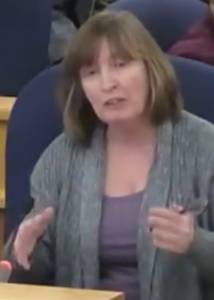 Diane Miller, Lester B. Pearson high school parent delegating to trustees. There is considerable debate about the accuracy of the Board’s enrollment projections but that was not the what Dianne Miller wanted to talk about.
“There are a couple of threads I would like to weave this evening. My starting point is Director Miller’s own words: “We did not go into this (field) to close schools”. Miller wanted there to be a discussion with determination and exhaustive input from all parties impacted by the decision that will be made tomorrow evening.
“What voices have been included in the process “asked Miller and “which ones have been missing? She suggested looking at the issue from the Board’s perspective
Accountability
Creativity
Empathy
Integrity
Equity
Collaboration
The words are highlighted in the Board’s multi-year plan.
“Has due diligence been met in each area. I would argue no.
“Creativity and Collaboration stand out to me as areas deeply flawed in this process by missing partners. “Where has the voice of the teachers been? They are with our children for almost seven hours of the day. Yet they have been kept silent and not given a place at the discussion table. The ones who are told to dig deep, to be creative with our children were not involved in solving a problem impacting those very same children we entrust with their education.
“What about the students. My son and daughter felt their voices were not heard in the process. One felt it was “a done deal”, the “other distraught” at the thought of her school being segmented. Besides the student survey why are they not represented at the PARC table? We hold contests, Think Bowls, Scientific, Robotic, and Math competitions all utilizing their brains…but not on how to save their school. “None of the questions in the student survey touched on their creativity / ingenuity for keeping their school off the chopping block so to speak. Yet they, just like their teachers, are most impacted by this decision.
“Mental Wellness Professionals – why were they not given a seat at the table. LBP was deliberately built as a smaller school setting. A school to provide for relief for the over-crowding at MMR. How ironic that it is poised to be a solution to Hayden in the same capacity and yet this time instead of relief it faces closure. Study upon study reflects the benefit of a 600-800 high school student population. The benefits have already been highlighted by past speakers. Bateman serves a broad sector of student education needs. Yet, no seat was given at the PARC table as to the impact of these school closures. “Where are the union representatives? Why are they quiet in this process?
“Today, as the public, we are given 5 minutes to race through our concerns in person. How is our voice really being heard face-to-face in a meaningful two-way discussion?
“Issues that as a group we could have raised and discussed are innovative ideas. Ways to address under-utilization by renting out of some spaces to community partners – tutoring businesses; Driver’s Ed; other co-op programs such as the LBP Co-op Nursery. As a collective we could have discussed ESL needs at a north/south school – a hub especially since the board likes and wants (and is) to attract students from abroad as high school students into the fold.
“Has the latter even been considered in the student numbers/projections? We could have (and have for LBP) provided resolutions to overcrowding issues at one school and under-utilization at another. Members of the LBP Committee got creative – because they flipped the issue. Instead of taking the premise of – we have underutilization and programming – tell us which schools to close; they started with the “we did not go into the field of closing schools” and came up with ways to in fact make that a true statement. How we are even seriously discussing the closure of a school in the north is beyond logic given the growth.
“Equity – why don’t we give equal weighting and concern to over-crowding as to under-utilization. We heard that 90% is the required utilization but have never, ever heard what the comfort level is for the over-utilization. Given some are projected (your numbers) for 110% or 140%…what is that acceptable %? it is unacceptable to make plans for permanent over-utilization, particularly in a growing area. Too risky. This is what happened to Hayden, now bursting. What number of portables is too many?
“Accountability – who is accountable for incorrect decisions? Who is accountable for short term vs. long term thinking? Who is accountable to the students, the parents, the community, the teachers, when they do not feel included or that they have been heard?
“Empathy – it goes beyond feeling and knowing others are struggling with our decisions. It means we walk in their shoes. Walking in them means we understand how our decisions will impact each and every student within our care. It means we want to have done due diligence, left no stone unturned, left no voice out, and have explored all possibilities before we close a school (let alone two). Let’s hit pause and not feel pressured to move forward with any decision that we are not 100% sure on or that we feel can be justified.
“Be a visionary. Be creative. Be innovative. Be accountable. Be empathetic. Be collaborative in the fullest sense of the word by including all voices at the table. Help this process and the ultimate decision be one that does uphold the integrity of the duty entrusted into your care…our children and financial resources (yes, $12 million in renovations to duplicate Bateman at Nelson is not fiscally responsible).
“So please hear my voice, and the voice of many others. Hear the voice of those who feel defeated in the community. Do not close these schools – they are not just bricks and mortar they beat with the hearts of our students. Partner with us to find a solution that works to solve what generated the PAR in the first place. Work not in silos but in collaboration with the community to come up with a viable solution. We are counting on you.
That is about as good as a delegation can be. Were the trustees listening – was Diane Miller heard?

 By Ray Rivers By Ray Rivers
June 3rd, 2017
BURLINGTON, ON
What an imperfect couple they made, the man of conscience and the rube. Not to insult the man but Trump has no excuse for behaving as he does. He has a ton of money, the richest US president ever. In fact he is almost as rich as Pope Francis, who heads one of the most profitable organizations in history, which unlike Trump’s empire has never gone bankrupt.
Anyway, when two billionaires get together you’d think they’d be nicer to each other. But these guys have very little in common outside of the asset values of their inherited corporate holdings. And Pope Francis actually understands what his job is all about, in addition to being a nice guy and a breath of fresh air.
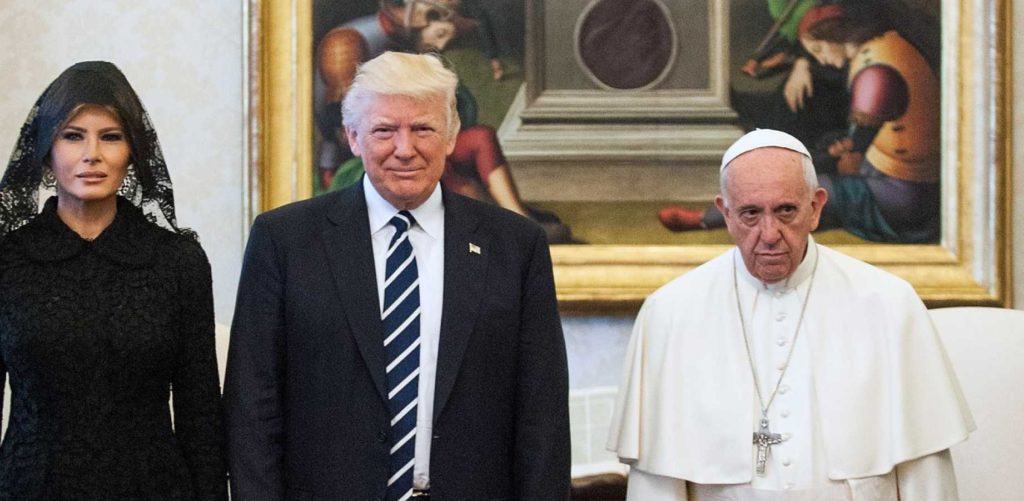 Pope Francis with US President Donald Trump and his wife Melania But the Pope got himself on the Donald’s bad side when he criticized him for wanting to build that stupid Mexico wall, in fact calling wall building anti-Christian. And Trump, in a rare moment of clarity, tweeted back that the Vatican is in fact also surrounded by walls. Though in his defence, Francis was likely being philosophical and that would have gone right over the head of the newest apprentice in the oval office.
So one can only imagine what went on behind those walls at the Holy See as the two old souls got hot and heavy into what’s wrong with the world and how to fix it. And you’d think they’d have stopped where they have common ground – opposition to birth control. After all, Trump is dismantling American planned parenthood, and the Church is still pushing its 10th century dogma, passively instructing faithful parishioners to breed like rabbits.
And for a thinking Pope who has come out against global warming, what could be more fundamental to that issue than reducing the rate of global population growth? Even if the birth rate of western nations has started declining, they’d need to decline much further to compensate for the longevity of seniors. And as for the masses of people in developing nations looking to acquire the fossil-fuel lifestyles we have been enjoying, if the rest of the world lived like Americans, or Canadians, we’d be in an even sorrier mess.
But in fact, global population is still increasing. And it’s not because we need more labour. Automation and robotics are already threatening labour markets everywhere. Ignorance and religion, as personified by Trump and the Pope, respectively, sit at center stage in this unfortunate drama as we blindly pull the curtain on our existence, as we know it, on this planet.
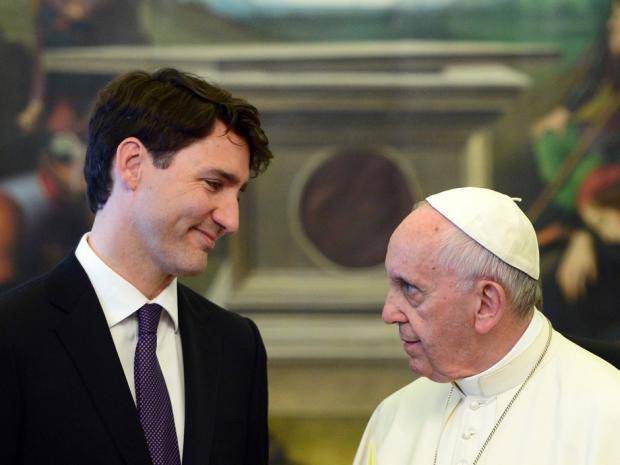 Prime Minister Justin Trudeau with Pope Francis So it’s little wonder when Trump departed their meeting, that the Pope couldn’t muster a smile. Not that Francis ever smiles for his official post-visit photo shoots, not even when good Catholic himself, our own Justin showed up at the Papal door. Trudeau wasn’t just there for the chat and a cup of holy tea. He needed the big man to apologize for the abuse Catholic educators over the years had inflicted on young indigenous children – the residential schools.
 Pope John Paul II with a young Justin Trudeau and his father Pierre Trudeau It was a recommendation of the Truth and Reconciliation Commission and Trudeau had taken to implementing all the recommendations, so here he was – true to his word. And rumours are that his Holiness will be popping over to see us next year, so Justin may have just pulled off that gutsy manoeuvre. But did he also talk about climate change and birth control?
Trump has finally made formal what we all expected. He has taken the USA out of the Paris Climate Agreement – the most important game on earth to try to preserve our climate. It was an election promise after all. And he’s in good company among people thinking that there is no art to the Paris deal. Nicaragua and Syria won’t sign up for emission reductions either. And at least he’s consistent. Trump made it clear during the election that he thinks climate change is only a hoax perpetrated by China to wreck the American economy.
So some are figuring that it is better to have America out of the pact than obstructing from the sidelines, as GW Bush’s team did while the rest of the world tried to implement that earlier agreement, Kyoto.
 The United States is on of the biggest emitters of environmental pollution. Already Europe has made it clear they will entertain no new discussions with the White House on the accord, and China is positioning itself as the new world leader on this most important file.
Besides Mr. ‘Make America Great Again’ will have his hands full tearing up trade deals, closing the borders, restarting coal mining and cutting taxes for the richest Americans. Chances are good that this agenda will just result in Trump digging the kind of hole GW dug himself. Indeed a hole so big that he’ll need a lifeline and prayer to get out. But after that unfortunate meeting with the Pope he won’t be getting any Papal Blessings.
 Ray Rivers writes weekly on both federal and provincial politics, applying his more than 25 years as a federal bureaucrat to his thinking. Rivers was a candidate for provincial office in Burlington in 1995. He was the founder of the Burlington citizen committee on sustainability at a time when climate warming was a hotly debated subject. Tweet @rayzrivers Ray Rivers writes weekly on both federal and provincial politics, applying his more than 25 years as a federal bureaucrat to his thinking. Rivers was a candidate for provincial office in Burlington in 1995. He was the founder of the Burlington citizen committee on sustainability at a time when climate warming was a hotly debated subject. Tweet @rayzrivers
Background links:
Catholic Business – Trump and the Pope – More Trump –
Birth Control and Trump – Birth Control and Pope – Trudeau and the Pope –
Trudeau Photo Op – Trudeau meets the Pope – Trump Statement –
Trump and Paris Accord – Trump Announcement – Trump Backlash –

 By Ray Rivers By Ray Rivers
May 29th, 2017
BURLINGTON,ON
It never fails. Leave the country for a week and…
The Conservative Party of Canada held its leadership vote and, as I had suggested could happen, it delivered an upset victory. Andrew Sheer, a 30 something career politician from Saskatchewan and former House speaker, is the new leader of Canada’s grand old party. Using a ranked ballot, also referred to as preferential or single transferable, Sheer snuck past front runner Maxime Bernier in the last elimination round, and snatched the prize by less than a single percentage point.
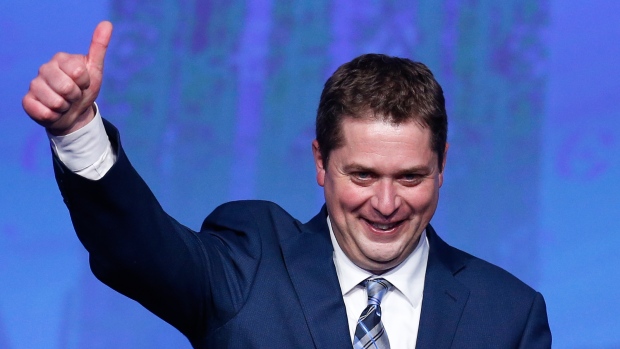 Andrew Scheer, 38 year old leader newly elected leader of the Conservative Party of Canada. One could not be faulted for seeing Sheer as a mini-me, a younger Stephen Harper. After all Sheer, like Harper, is a ‘social conservative’, a label some consider synonymous with right wing or reactionary views. One can’t help but get the feeling that he wants to turn the clock back to the time Mr. Harper ruled the roost – and that the recent period of Liberal government is just an inconvenient stop on the highway to a more conservative Canada.
And like Harper, the new leader is anti-choice when it comes to a woman’s body. Though Mr. Harper was careful to avoid re-opening the legalization debate, which former Conservative PM Kim Campbell has so skillfully brought to a conclusion. That Sheer has played the abortion card in this contest should be a red flag to all potential voters who value freedom of choice.
Other than that we will have to wait and see how progressive his leadership of the former Progressive Conservative party will be – or not. And that may determine the party’s chances of sliding in between the two parties on the left and centre, and forming government come 2019. Sheer, as a novice leader, will be facing a still-popular Justin Trudeau, who will argue for the opportunity to complete what he had begun in his first term.
And the New Democrats will also be showcasing a new leader, which may lead to more of a three way race than in 2015.
Speaking of three way races, there is B.C.’s recent election. Typically a two party province, there hasn’t been a minority government there since the 1950’s,. But that luxury has come to an end after the Green Party elected three members to the legislative assembly. And the B.C. Liberal Party, arguably more conservative than its name, had barely eked out a two seat lead over the opposition NDP.
 B.C. Liberal Leader Christy Clark is one seat shy of being able to form a government. Photo credit – THE CANADIAN PRESS/ CHAD So the Libs are one seat short of a majority. And while they could claim the right to form government, given their first place finish, it is unlikely they’d survive the first non-confidence vote. The Greens are tired of sitting in the wings and are hungry for power. So they are looking to bed down with either one of the other parties, a coalition or contract for a one-term-stand as opposed to a marriage of convenience.
Regardless who they sleep with, the result will mean a fresh look at resource projects, like the recently approved Kinder Morgan oil pipeline. And in a province which has built its economy in large part upon its rich endowment of natural resources, there will be fireworks – and possibly new tensions with the federal government. It is expected that a deal will be negotiated by mid-week, so we’ll soon see how this plays out.
And the real sticking point in these coalition discussions is the matter of electoral reform. B.C. in recent years has twice conducted a referendum for electoral change. And both of these – the one for proportional representation and the other for voting by a single transferable (ranked) ballot – have failed. So the Greens are saying ‘to-hell’ with referendum – let’s just do it. But the NDP and Libs are reluctant to wear the blame for defying the results of those previous polls.
The Greens want to introduce proportional representation, a system which does offer more effective representation and is better designed to accommodate minority situations and political coalitions. And that would be a life-line for the longer term survival of their party.
Though had the previous Liberals been able to convince the public on the merits of a preferential ballot when they were in power, similar to the approach the federal Conservatives used last weekend, they might have been returned to office with a majority and the Green Party left out in the cold. There is a lesson in this for our federal leaders.
 Ray Rivers writes weekly on both federal and provincial politics, applying his more than 25 years as a federal bureaucrat to his thinking. Rivers was a candidate for provincial office in Burlington in 1995. He was the founder of the Burlington citizen committee on sustainability at a time when climate warming was a hotly debated subject. Tweet @rayzrivers Ray Rivers writes weekly on both federal and provincial politics, applying his more than 25 years as a federal bureaucrat to his thinking. Rivers was a candidate for provincial office in Burlington in 1995. He was the founder of the Burlington citizen committee on sustainability at a time when climate warming was a hotly debated subject. Tweet @rayzrivers
Background links:
CPC Leadership – More CPC – Even More CPC – B.C Election – Minority Consequences –

 By Pepper Parr By Pepper Parr
May 24th, 2017
BURLINGTON, ON
The political set in Burlington is a secretive crowd.
We frequently get messages with the line “You are not hearing this from me!”
I’ve never understood why these people don’t stand up on their hind legs and say: “My name is John Doe and I want to know why…?”
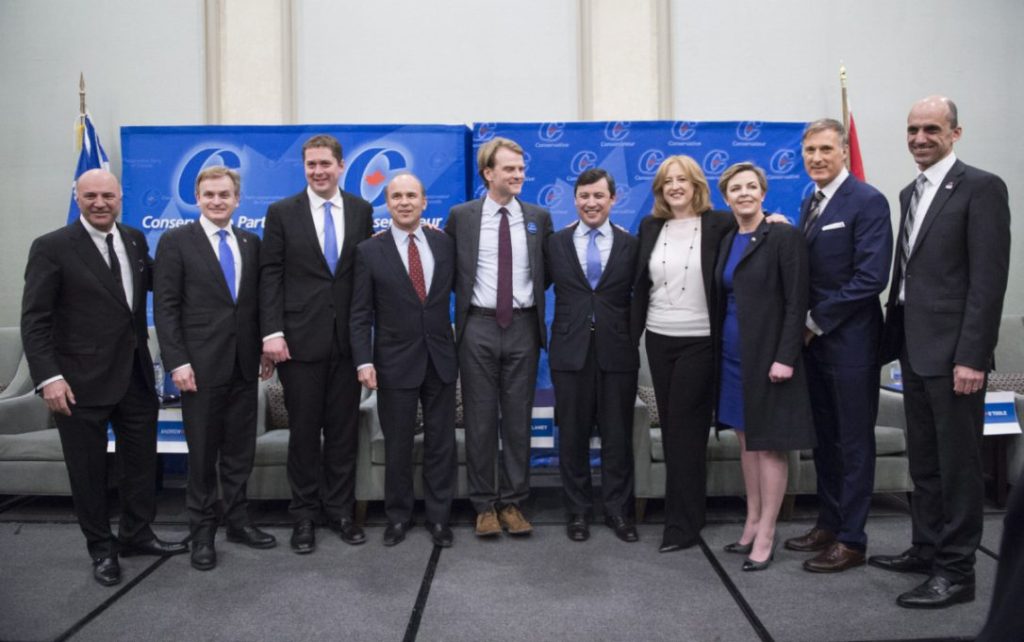 The men and women running for the office of Leader of the Conservative Party of Canada. Kevin O’Leary, on the far left, dropped out of the race but his name is still on the ballot. That being said we were told that: “ There have been many members of the Conservative Party who are social conservatives who either did NOT get a ballot or it came too late to mail in. I wonder if there is a story here.”
Is there a story here?
Are there others who did not get the ballot they expected when they became members of the Conservative Party?

 By Ray Rivers By Ray Rivers
May 19, 2017
BURLINGTON, ON
Rona Ambrose has been a credible, if not admirable, leader of Canada’s official opposition. Indeed, she has grown from her disappointing early tenure as Harper’s first environment minister. But then Harper promoted her, so she must have exceeded his expectations, doing what the boss wanted all his appointees in that job to do – reduce the role of the ministry in protecting the environment.
 Rona Ambrose, current interim Conservative leader leaving politics heading for a US Think Tank And she’s smart enough to understand that the voters won’t stand for the kind of nastiness, as she has put it, which had characterized the Harper years. So it is unfortunate that after thirteen years in the saddle she will be changing horses, vacating her parliamentary seat and heading for more lucrative work south of the border. Or a better metaphor, she’ll be leaving the daily fish bowl in Ottawa for one of those lucrative beltway political shark tanks.
Her job as opposition leader is almost over anyway and will disappear at end of the month, once her party has chosen its new leader. Of course one could be forgiven for not knowing that a national leadership contest is underway, unless he/she is an ardent political observer, an active member of the Conservative party or a journalist. For one thing there are way too many candidates, thirteen, to seriously follow and keep track of, each with his/her own particular spin.
Then there is the thinly veiled racism that has surrounded the campaign, particularly with some ‘socially conservative’ candidates. This has had the effect of souring the entire process and reflecting unfairly on all the other contestants as a consequence. One would have hoped these prospective party leaders had learned their lesson about race-baiting from the last election.
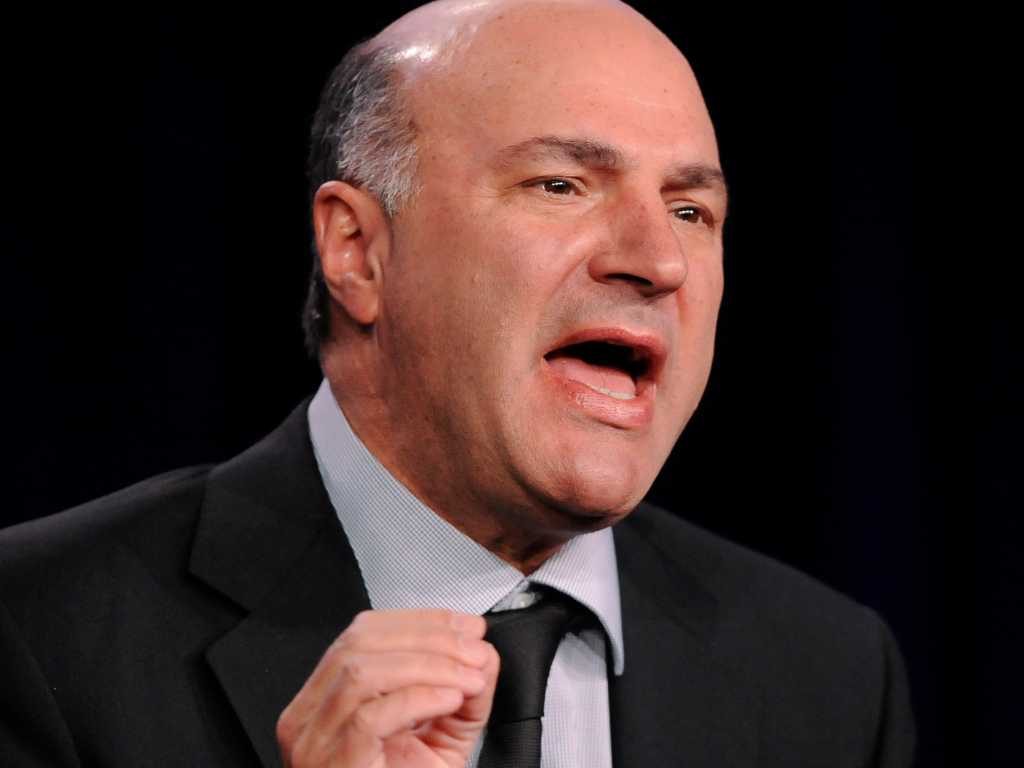 Kevin O’Leary tries to be Canada CEO for all of 30 seconds; chickens out. Or It could be that the star candidate, that neophyte political wannabe, Canada’s Donald Trump and self-proclaimed Mr. Wonderful, Kevin O’Leary, after trying out to be Canada CEO for all of 30 seconds, has chickened out, deserted the fold and literally left town. But our hero and super star candidate was also a first class membership recruiter, and he has asked his now disillusioned supporters to shift their allegiance to Maxime Bernier, making Max the current front runner.
Bernier is best remembered as the incompetent minister of foreign affairs who left a pile of sensitive files with a biker-chick, his gang-linked girlfriend, and had to be fired as a result. But he is a francophone which the party thinks is big plus for winning seats in Quebec. Though he has a remarkable, some would say scary, libertarian outlook on politics, threatening to destroy Canada’s agricultural supply management system, co-incidentally one on which so many Quebec farmers rely.
Bernie may be a tad extreme but is true to the conservative creed. In fact all of the candidates are preaching smaller government, promising to balance the budget and willing to cut some taxes. It’s that old fake saw about how cutting taxes for the rich will rain down riches on the poor. Since only the wealthy create jobs we need more of them to be wealthier.
All candidates want to get rid of the carbon tax, except the moderate, and maverick, Michael Chong from near-by Wellington-Halton Hills. He would cut income taxes to make the carbon one revenue neutral, à la BC. Chong, like Bernier, is a reformer though his focus is on building a better working government while Bernier sounds like he’d like to get rid of government entirely.
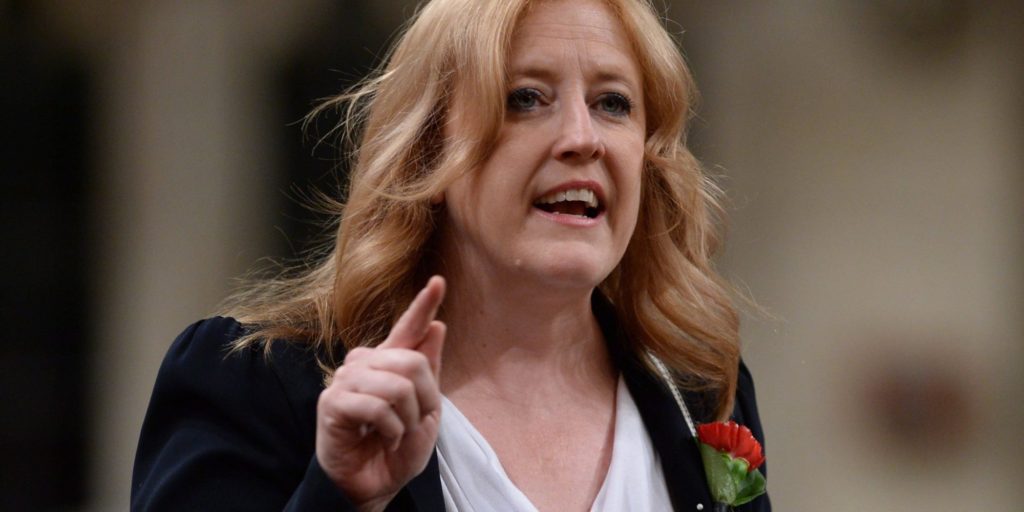 Conservative MP Lisa Raitt There are only two women in the contest, and both from Ontario. Kellie Leitch has spent a lot of time and effort pitching better screening of immigrants to make sure they are Canada-ready when they get here. Her single issue is called ‘Canadian values’ though, try as she might, she is still having trouble explaining what that means. So the right-wing media assumes she’s talking-up racism and they love her – which is enough to turn most reasonable conservatives to consider anybody but Kellie.
The other female is former Labour and Transport Minister Lisa Raitt. A former Toronto Port CEO, she is one of the few candidates who actually held a senior executive position in the business world. And perhaps that explains her reasonable moderation for most things political. But being moderate doesn’t get you headlines, and to win a nomination for leader of a party now out of power – it helps if you get media attention. Raitt is the MP for Milton.
The smart money is riding with Bernier come May 27th, particularly now that he has been given a big boost by Canada’s most famous dragon. But the voting is by a mail-in preferential ballot where party members get to rank their choices in the order they would like to have them, or strategically in order to keep some other candidate from winning. So the term ‘front runner’ could well be a misnomer for this box of political chocolates.
This leadership race could be described as a crap shoot, but at least it won’t be a bun fight, since it’ll all be decided by the click of a computer key. Being number one in a poll of thirteen candidates doesn’t mean being number one after the computer does its thing, adding in all the secondary choices. And it’s entirely possible that a candidate could win the election by riding to the top as the most popular second or third choice.
Ranked ballots were used before when the party elected Stephen Harper in 2004, but it was a smaller field of candidates then. Thanks in part to Mr. O’Leary there are about a quarter of a million eligible voters, though not all will vote, especially if Kevin fans decide to sit on their hands rather than vote for Mad Max. The Liberals had almost 300,000 members/supporters on their rolls but recorded less than half that number when it came time to vote at their leadership in 2013
Interestingly, the Conservatives, who have dismissed using a ranked ballot for national elections, are perfectly comfortable with exactly that process for their own leadership contest.
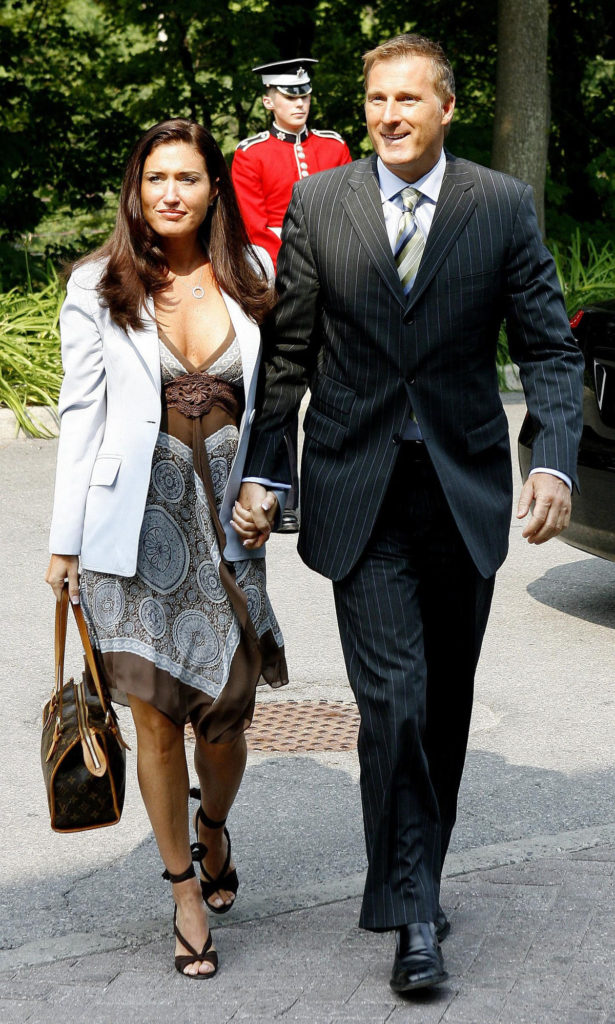 Maxime Bernier thought to be the front runner who may not have enough second choice support. Anyway, I’m betting on front-runner Bernier to bring home the prize. And if the world worked the way it was supposed to, Kellie Leitch should finish last, given her polarizing approach to politics.
While the more moderate candidates like Michael Chong or Lisa Raitt might offer the best chance for the party to appeal beyond its ideologically-driven base, that is not going to happen. Chong’s support for the carbon tax makes him a long shot. And Raitt doesn’t sound like she really wants the job, suffering from a disorganized campaign and message. And if her recent interview with National Post columnist John Ivison is to be taken seriously, like Ambrose she may also be heading for the door.
 Ray Rivers writes weekly on both federal and provincial politics, applying his more than 25 years as a federal bureaucrat to his thinking. Rivers was a candidate for provincial office in Burlington in 1995. He was the founder of the Burlington citizen committee on sustainability at a time when climate warming was a hotly debated subject. Tweet @rayzrivers Ray Rivers writes weekly on both federal and provincial politics, applying his more than 25 years as a federal bureaucrat to his thinking. Rivers was a candidate for provincial office in Burlington in 1995. He was the founder of the Burlington citizen committee on sustainability at a time when climate warming was a hotly debated subject. Tweet @rayzrivers
Background links:
Ambrose – Candidates – Nastiness – Conservative Leadership –
Leadership Voting – Racism and the Tories – Leitch Video – Rebel News –
Pro Bernier – Not Bernier – Lisa – Lisa Could Win – Strange Campaign –

 By Ray River By Ray River
May 12, 2017
BURLINGTON, ON
Not since the ’80’s, not since before the cold war ended, has the world seemed so very much on edge, particularly in the birthplace of the last two world wars. As we know, European nations are having to rearm themselves, thanks to the new threat posed by Russia’s near dictator, Mr. Putin. He has an ambition – to restore the Soviet Union and reinstate Russia’s place as a major world power.
Take Ukraine, which Vlad the conquerer tried to do a couple of years ago, though it appears he may be content to settle for those bits and pieces of the former Soviet republic where his army is now firmly entrenched. That is the lesson of self-defence – why even in peacetime good fences make for better neighbours.
 They are not talking to each other: Russian president Vladimir Putin and the President of Ukraine Petro Poroshenko. Putin has said that Ukraine shares the blame for allowing this rape to take place – as if rape could ever be justified. The rise of the oligarchs concurrent with the deterioration of the old communist social system; the corruption that infiltrated almost all walks of life; the systematic dismantling of one of the most powerful military forces in Europe; and a former president colluding with Putin, the former KGB agent, to facilitate the country’s takeover – all contributed.
My wife and I are volunteering to spend three weeks this year teaching young Ukrainians to speak English and to understand and develop an appreciation of western customs and traditions. to “the president of Ukraine” GoCamps is a non-governmental organization, supported by the Ukrainian government, with the goal of creating awareness of western society and thus offering Ukrainians a better future beyond the old eastern bloc. This year they are hoping for 1000 volunteers to expose 300,000 children to our way of life.
Most Ukrainians look at neighbouring Poland which has amplified its economy nearly twelve-fold since joining the EU, while Ukraine has barely grown by a factor of two or three. But Ukraine took too long deciding to apply for EU membership, and although it has been the recipient of numerous European development programs, its eventual application to join ticked off Vlad and brought insurrection and war to the 20 something year-old nation.
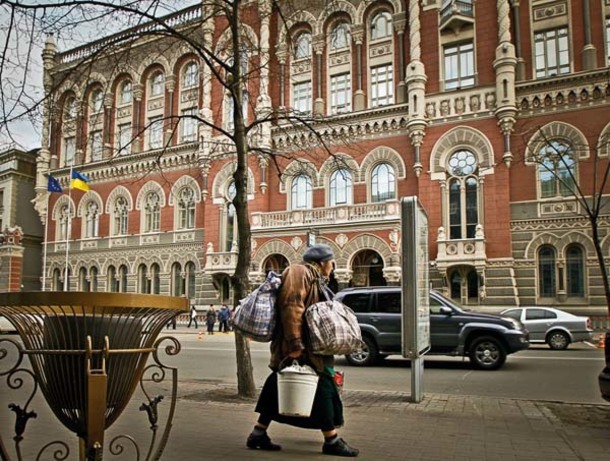 The Ukrainian economy has not grown the way the Polish economy has. But the EU is not the only entity assisting this country in removing the shackles of Russian domination. The British, Americans and we Canadians are providing both economic as well as military assistance – most significantly by training Ukrainian soldiers in a program called Operation UNIFIER. After all, Ukraine is no stranger to NATO, having been an active partner, though not a member, including supplying troops for NATO initiatives in Afghanistan and the former Yugoslav states.
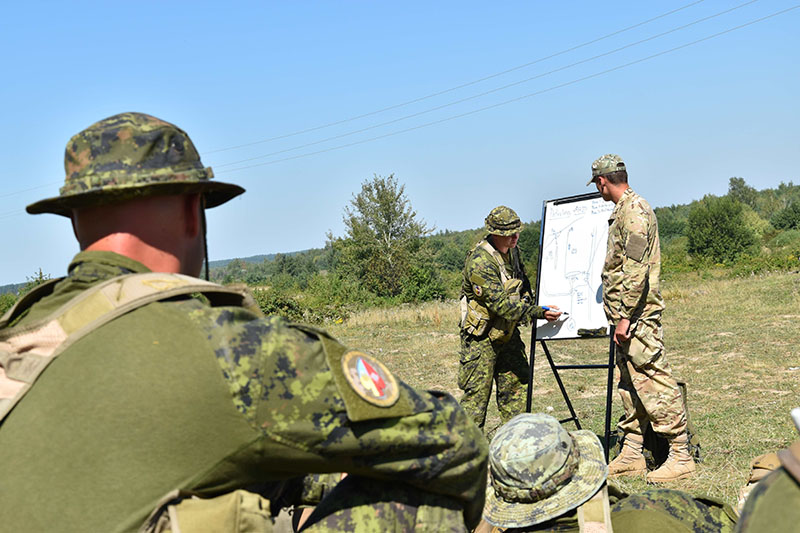 A Canadian soldier explains the conduct of a patrolling raid to a Ukrainian platoon during small team training at the International Peacekeeping and Security Centre in Starychi, Ukraine. I have been invited to visit a former Soviet army base where some 200 Canadian military trainers will be in action with Ukrainian recruits, over 3000 of whom have already graduated. Of course Canada is not fighting Putin’s forces so the training is taking place well away from the conflict zone in south-eastern Ukraine, and out of harm’s way. But just to be safe, I’m told, I’ll have to don a helmet and body armour for my tour.
It is just not feasible for Ukrainian forces to take on the well-trained and supplied Russian military – at least not yet. So since the beginning of the Russian invasions the primary response by western nations supporting Ukraine has been to apply limited economic sanctions on Putin’s Russia. Those sanctions, coupled with the drop in oil revenues, (which next to weapons make up the bulk of Russia’s export earnings) have hurt Putin’s economy and restrained his plans to expand his military even more.
So America’s new president, the enigmatic and unpredictable Donald Trump is a concern. Nobody seems to understand what the US president’s aspirations are, if he has any at all, besides exercising power, further enriching himself and going for the glory of it all. But he had spoken warmly of Putin during his election campaign last year, and questioned the lifting of US sanctions. And he and those around him are known to have had significant financial dealing with the Putin crowd.
His recent firing of the FBI Director, who more than any other individual contributed to his becoming president, ironically, has unnerved virtually the entire political class in America. Despite his official rationale for booting James Comey out of his job, everyone understands it has to do with the FBI investigation into Trump and friends, and Russia.
Although the US is not at war with Russia, the two nations are at odds over the conflicts in Syria and Ukraine – and possibly Russian arms supplies to the Taliban. And then there is the hacking of democratic institutions in the USA during last year’s federal election which has been traced back to Moscow. So as Trump welcomed Russia’s foreign minister to Washington this week with open arms, one can’t help but wonder where this is going to go.
 Malaysian airlines MH17 believed to have been shot down by Russian operatives in rebel held eastern Ukraine. Travelling to Ukraine will take me on a touch-down to Holland . Dutch citizens were the largest contingent of passengers killed when Russian operatives in rebel held eastern Ukraine shot down Malaysian airlines MH17 a couple of years ago. Perversely, this tiny but important European nation voted against accepting Ukraine into the EU in a referendum last year – as if they were taking out their anger over losing their loved ones on the victims of the broader conflict, rather than the actual culprits. Sometimes that is how it goes in rape cases – we blame the victims.
I visited Ukraine last year for the first time, while doing research for a book I’m writing. And this year its future is only marginally more promising. Except that the economy is stronger and so are the nation’s defences, thanks in part to Canada. And for the Ukrainians, despite support from western nations, they understand that in the end it is they alone who must secure their future and their own security. So I look forward to observing our trainers at work as they help the local soldiers get into shape for even more conflict. And maybe they’ll even let me drive a tank.
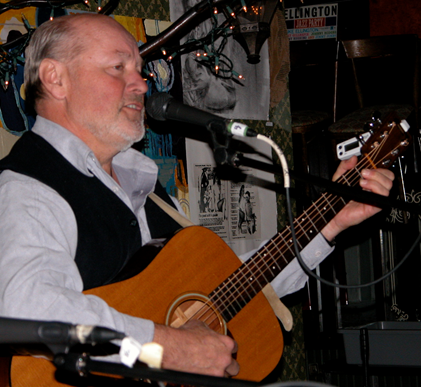 Rivers will be taking his guitar with him and teaching some of the students how to play it – and then leaving the guitar behind as a gift Ray Rivers writes weekly on both federal and provincial politics, applying his more than 25 years as a federal bureaucrat to his thinking. Rivers was a candidate for provincial office in Burlington in 1995. He was the founder of the Burlington citizen committee on sustainability at a time when climate warming was a hotly debated subject. Tweet @rayzrivers
Background links:
Ukraine vs Poland – Canada Trains Ukrainians – Trump and Russia –
MH17 – GoCamps

 By Staff By Staff
May 8th, 2017
BURLINGTON, ON
And now it comes down to the people who are going to be impacted directly by the closing of high schools.
The parent’s at Lester B. Pearson feel disillusioned by the decision to close their school. The feeder schools that kept Pearson alive were shifted to Hayden high school leaving Pearson with very little in the way of incoming students from the elementary sector.
 Bateman high school parents decided to give their high school a hug – hoping that the Board of Trustees would give them a hug in return? Some of the parents at Bateman are close to frantic with the decision to close that school in 2019 when an addition to Nelson high school will take in what are described as very emotionally vulnerable students with serious learning disabilities.
The parents at Central have gone very very quiet. They were on the original close list (they shouldn’t have been) but they were not on the recommendation that was sent to the trustees last week.
An unfortunate statement released by the Central parents didn’t help the hard feelings that developed between parents at the different schools that were up for closure.
It took ward 2 city Councillor Marianne Meed Ward an inordinate amount of time to issue a statement and at least try to soothe the very ruffled feathers
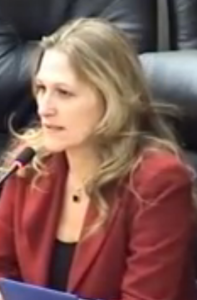 Is a city Councillor restricted to serving on just city council or can she take part in other organizations as well? Ward 2 council member Marianne Meed Ward accepted the request to be a member of the PARC – she has a son at the high school. The Central decision to ask Meed Ward to serve as one of their representatives on the PARC wasn’t popular with many; some saw it as a conflict of interest. She had every right to serve – she has a son at the high school. Quite how her being as city Councillor could be seen as a conflict suggests those who made the remark don’t understand what a conflict of interest is.
If there was a conflict of interest it was with the Mayor who took the gutless approach to representing the city on the PARC and sent the City Manager instead. The conflict was between his personal interests and those of the people he was elected to represent.
The city representative on the PARC did not have a vote – the person was just there as an observer and in a position to make comments. Ridge who filled the city seat said very little other than to suggest that if a school was closed the Board should not sell the land. A school board basically has to dispose of any land or buildings that are surplus to its needs.
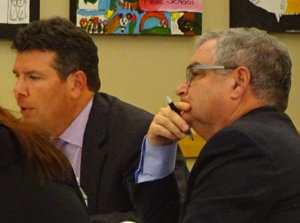 City manager James Ridge, on the right, was appointed by city council to be the observer at the PARC meetings. What the city could have done was looked for ways to rent some of the excess space the school board has and not continue to rent expensive space in the Sims building across the street from city hall where they occupy several floors in that building.
Kim, a parent who moved from the Alton Village into the Lester B. Pearson community so her children could attend Pearson. She and her husband wanted their children to attend a small school. They bought in that community so there children could attend the school
Rory Nisan, a small guy, who played rugby at Pearson said “ I would never have gotten on any team at M. M. Robinson”
Another parent that will be delegating has a boy that is a quiet child, “not the kind of student that will survive in a school with close to 1000 students. He just wouldn’t make it.” This parent, who didn’t want to be named, is working on getting her seven page delegation down to two pages. “All we get is five minutes” she said and she isn’t comfortable being a delegate. “Am I going to be criticized or humiliated when they ask me questions”, she asked.
“When we moved into this community” she said “we called the school and asked about the rumours that the school was going to be closed and we were told that it was just a rumour”.
 Every high school that was at risk had T shirts made up. Even Nelson which was never really at risk. The schools frequently send pieces of paper home with a student – it gets tucked into their back backs – and they are usually on pink paper. They tend not to get read admitted this parent, which drives the administrative people at the school board up the wall who ask – ‘what do we have to do, hang a sign around the neck of every student when we want to get a message to their parents?’
“It was a rainy Friday after school in early October, and we received a letter explained one parent, saying that Pearson was proposed to close in June 2018. I thought to myself, How could they do this just as my child was settling into high school?
“Who does this to students as they just start their high school year? I had so many questions and yet didn’t know where to go for the answers.
“Over the course of the past seven months, our family has endured so much heartache, uncertainty and unnecessary stress. From attending countless public meetings only to witness the conflicts developing between communities…..there were no answers, just more questions. We as a family have participated in all community rallies and committee meetings in hopes to find answers and in a small way feel that we had some sort of control over the situation. As time passed, it was obvious, this process was unproductive and was tearing parents, students, and communities apart.
“As I put on my rose coloured glasses and prepare my delegation, I find myself almost brought to tears. As I sit here in front of my computer and try to put all my thoughts down, I am filled with so many emotions. I found myself frustrated, angry, and emotional torn. I am counting the moments until this is over. When there will be no more meetings….no more agendas…. no more rallies.
 Emotions have been running very high. Not a lot of empathy coming from the Board staff – the trustees get to react to parent concerns during delegations that will start on Monday – the 8th. “The emotions are too much, the memories of the events that have brought me to this final moment makes me wonder…How did I get here? There is an overwhelming fear inside knowing the words I choose have to perfect to have any real impact. What can I say to make the Trustees see the damage a school closure will do to not only my family but so many others? What magic word or key point can I include that will sway their thoughts of a school closure? After all, I am just a parent….. I don’t have a background in education or politics yet here I am expected to stand up and read my delegation in front of a room filled with people who do this every day.
“I just want this nightmare to be over. The students want it to be just another day at Pearson.….where everyone knows you, where teachers support you, where smiles are exchanged, where good memories of high school are made….…..our kids deserve that!
Were you to talk to this parent you would hear her bubbling with ideas on how to keep the school open. Bur she is “just a parent” and she isn’t at all certain that her voice is going to make any difference.
One of the delegations the trustees will ear this evening reads like this:
I wish to express my deepest concerns and disappointment regarding the potential closure of Lester B Pearson High School. I strongly believe that the drastic measure to close our school is very short-sighted.
Lester B Pearson is ideally located in an area of population growth and demographic change. The issue with the 1800 empty seats is the fact that these spaces are not spread evenly across grade levels nor across schools. With 1267 of the empty pupil spaces located south of the QEW, it makes a closure of any North school unwarranted and unjustified.
Since the building of Hayden, our enrollment numbers have dropped considerably. The main reason being, is that we currently have only have 1 1/2 feeder schools, while Hayden has 7 and a large portion of our catchment area is mainly industrial and commercial.
Despite the close proximity to Pearson, many students are being redirected to other schools and require driving or busing, which doesn’t make sense from a logical, geographical, nor a financial perspective. This simply reinforces the need for balancing of feeder schools and redefining boundaries, and NOT for the drastic measure of a school closure in Burlington.
The current low enrollment at Pearson was created by the HDSB and NOT the lack of growth in North Burlington. Based on the most recent data from the 2016 Statistics Canada Census, the population in Burlington has increased by 4.3 % since 2011, and is growing faster than the estimates currently being used by the HDSB. Should the time come when a new school is needed to satisfy additional growth, more money and more “land”which are both currently limited, will be required.
There is a growing trend in Burlington, with the older residents remaining in their homes well past retirement……demographic change is “inevitable”. With the completion of the housing developments within North Burlington, there will be a substantial increase in families moving to the immediate area. It is important that we as a city be proactive and plan for the future growth and change that will result from our current aging population downsizing. With 3 & 4 bedroom homes nestled perfectly between both elementary and highschool, it makes the Pearson and Palmer area a highly sought after community for new and growing families.
Built in 1976, Pearson is the “2ND NEWEST” public high school in Burlington and offers expansive grounds, tennis courts, running track, and beautiful trails/forestry that provides a unique learning environment and recreational area for many local residents to enjoy year round. Despite the current low enrollment, and the rumors of a potential closure, there are still a good percentage of students choosing to attend Pearson through optional attendance.
Pearson was built as a small school and has consistently proven to be a successful platform for providing academic excellence and student success. According to Fraser Institute, Pearson ranks the “2nds BEST” public high school within the City of Burlington. Research has shown, that many students tend to perform much better and suffer from less stress and anxiety in a small school environment.
With bullying issues a growing concern, many students and parents are seeking out small schools where fighting and bullying are less likely to occur due to having a much lower population. The small school environment not only enables students to be more visible to teachers,it also helps to make it easier for teachers and staff to respond should a confrontation between students arise.
The smaller school environment, improves the student teacher relationship, making it easier to identify a student’s need for support and provide a more personalized educational experience. Having a smaller staff size also makes it much easier and faster to collaborate in order to provide student support when needed. In comparison to the larger school environment, students in a smaller school also tend to feel more connected to their school and their community as a whole.
In small schools, such as Pearson, the percentage of students involved in extracurricular activities and team sports is likely to be much higher than at a larger school. Although there may not be as many teams, there is a greater chance of making the team as a result of less competition. Being part of a team helps to build student self-esteem, strengthen social skills and builds strong and positive relationships with their peers.
Overall, small schools tend to be safer, offer a more positive learning experience, and results in higher academic performance amongst students especially those with social, emotional, and academic challenges.
With growing concerns relating to our youth’s mental health, childhood obesity, physical and emotional well-being, perhaps the HDSB should be focusing their efforts on exploring creative/alternative programming, advocating for small schools, promoting walkability, lowering the needs and costs associated with busing, strengthening school-based community partnerships, and NOT on closing schools in Burlington.
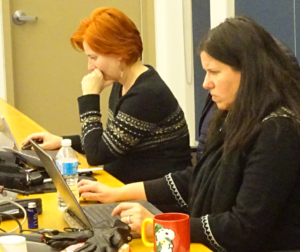 Most of the Burlington trustees attended every PARC meetings and then their twice a month Boar meetings as well. One of those meetings went to well after midnight. Trustees Grebenc and Reynolds taking notes How will the trustees follow up with their questions?
What impact will delegations like this have on the process?
At one of the PARC meetings Director of Education Stuart Miller admitted that the Board doesn’t communicate with parents all that well.

 By Ray Rivers By Ray Rivers
May 5th, 2017
BURLINGTON, ON
The Duke of Edinburgh, Prince Philip, has had enough and is retiring from his official duties serving the Queendom of England, Scotland, Northern Ireland and Wales. And why not? He’ll be turning 95 years this year. And the biggest part of his old job was cutting ribbons, visiting the colonies and keeping two careful steps behind the real power on the throne. ‘Bin there, ‘dun that – time to move onto other things.
 Premier Wynne runs a job training course for Mayor and Rotary official at Ribfest. Ontario’s Kathleen Wynne isn’t royalty but she also has a palace, the Pink One. And she has tumbled so far down the polls since the last election, barely skirting single digits, that you’d think it would be time for her to perform that preverbal ‘walk in the snow’ and retire as well. Though she’s not anywhere near Prince Philip’s ripe old 95, she has had an impressive career including being Premier of Canada’s largest province. There’s no shame in voluntarily leaving office with that kind of rap sheet.
But the province announced its annual budget last week and now, all bets are off. It was a blockbuster budget that should restore confidence in her party, even if you think the Liberals reign of almost 15 years has been too long. But this year’s budget is actually balanced folks. For the first time in a decade, in fact since Dalton McGuinty ran balanced budgets ahead of the recession in 2008, Ontario is out of the red.
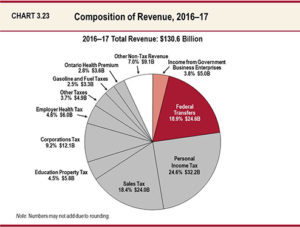 Where the money comes from … 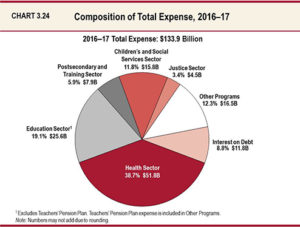 … how we spend it. Sure, Stephen Harper balanced the federal budget three years earlier. But he had to sell off some serious furniture (GM shares) to make it happen. And even if he’d won the 2015 election, the way his government was heading was back towards deficit again. And Harper’s austerity plan for Canada to return to balance included some of the largest public service cuts ever, as he tried to shave costs.
By contrast, the Wynne government was relatively expansionary, adding full-time kindergarten for 260,000 children; introducing free tuition for needy students and free dental care for children in low-income families, and tackling a promised $50 billion investment in infrastructure programs. Despite that, Finance Minister Charles Sousa has committed to an ongoing string of balanced budgets.
The province has the strongest economic growth in Canada In fact Ontario’s economy is well ahead of all the rest of the G7 including the USA, and with unemployment numbers lower than at any time since the 2008 recession. Of course the lower exchange rate has helped, as has revitalized federal infrastructure spending, but the Premier’s people will tell you they’ve been planning this for a long time.
So a strong economy means that, even with a balanced budget, we can still afford to undertake new initiatives like a new universal pharmacare program for those under 25. Also in the budget is more money to cut hospital wait times. And then there is the on-going commitment for billions in new infrastructure, including more to ensure reliability of the electricity sector and to subsidize lower income electricity users.
And to all those hand waving critics complaining about how Ontario’s electricity rates were killing jobs and the economy – I guess they were wrong. And they were wrong even before the Premier announced her new Hydro Plan, which will reduce consumer rates by up to 25%, starting later this summer. Of course there is no such thing as a free lunch so we’ll be ultimately paying for that re-mortgaging of hydro costs.
But the jobs and economic growth tell us that higher electricity rates have also provided incentives for the development of new energy technologies, such as LED light bulbs. And that kind of innovation together with the adoption of renewable energy, has likely generated more jobs than were ever lost from the spectre of high electricity rates.
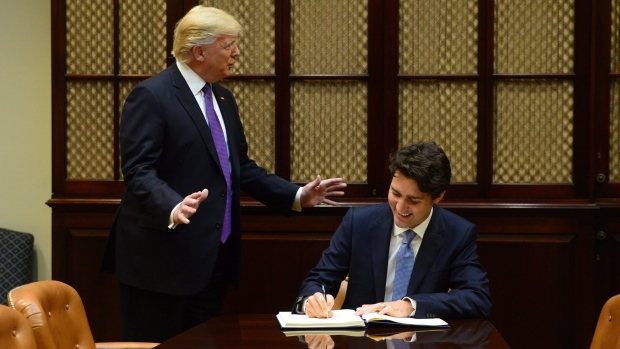 We aren’t sure if we have a friend in the White House. President Trump does like our Prime Minister. So as budgets go this is a pretty good one on just about all accounts, detractors notwithstanding. Of course the debt will still need to be reckoned with, but that is another story. The point is that Ontario is back as an economic powerhouse. And when you are the Premier of a province doing as well as this one, you have a mighty powerful reason to give it another go come next year’s election.
Still there are dark clouds on the horizon given that unpredictable man in the White House, who just happens to be our nearest and dearest trading partner. Then there is the housing bubble which is unsustainable, and is already starting to show cracks, despite the government’s new bandages to help curb crazy prices.
 Ontario Premier Kathleen Wynne – crafty, strategic with a track record that is going to be hard to beat. And nothing is perfectly predictable in politics, the public can sometimes be fickle, ornery, irrational, mean spirited or just bored with a good thing.. Look at Brexit, Trump and perhaps the French election this weekend.
But if the next provincial budget, which will be the real election budget, is anything like this one, Kathleen Wynne should be hard to beat come election day despite her current polling malaise. And that means she won’t be leaving the pink palace and joining Prince Phillip into retirement anytime soon.
 Ray Rivers writes weekly on both federal and provincial politics, applying his more than 25 years as a federal bureaucrat to his thinking. Rivers was a candidate for provincial office in Burlington in 1995. He was the founder of the Burlington citizen committee on sustainability at a time when climate warming was a hotly debated subject. Tweet @rayzrivers Ray Rivers writes weekly on both federal and provincial politics, applying his more than 25 years as a federal bureaucrat to his thinking. Rivers was a candidate for provincial office in Burlington in 1995. He was the founder of the Burlington citizen committee on sustainability at a time when climate warming was a hotly debated subject. Tweet @rayzrivers
Background links:
Prince Phillip – Premier’s polling – Canada’s Deficits – Ontario Budget –
Budget Highlights – More Highlights – Budget Winners and Losers –
New Hydro Plan – Pink Palace – Detractors – More Detractors –

 By Tom Muir By Tom Muir
May 1st, 2017
BURLINGTON, ON
Tom Muir, an Aldershot resident who does not have children in any schools, wanted to know why parents in the city of Burlington were being told that two of the city’s seven high schools should be closed. His attempt to get at the real reason behind this decision boggles the mind. Red tape galore – a long but not very pretty story.
Part 4 of a four part series: Another Chapter in This Saga
 Because the response to my Freedom of Inforamtion (FOI) request to the Halton District School Board got tied up in the mail, my failure to receive a response to an identically worded FOI request to the Ministry of Education prompted me to contact them. I found the same problem that a Ministry response was in the mail to my home. Because the response to my Freedom of Inforamtion (FOI) request to the Halton District School Board got tied up in the mail, my failure to receive a response to an identically worded FOI request to the Ministry of Education prompted me to contact them. I found the same problem that a Ministry response was in the mail to my home.
I then asked for and received a response by email, and got it April 11.
The Ministry replied that;
“upon review of the records, it has been noted that your request may affect the interests of a third party”
“The third party has been notified that a request has been made for the records, and has been given the opportunity to make representation concerning the disclosure of the records.”
“A decision on whether the records will be disclosed will be made by April 30, 2017 in accordance with subsection 28(4) of the Act.”
At this message, the identity of the third party remained anonymous.
It was obviously concerning because this long delay, with the opportunity for the third party to appeal a decision to release at the April 30 date, meant that the FOI documents from the Ministry might not be released until after the PARC process was essentially over and would be of no use.
This statement and finding begged me to ask numerous questions. For example,
– I don’t know how such an FOI request as mine, involving entirely public business, by public institutions, could involve the interests of a third party other that the HDSB and the Ministry of Education, and employees of said institutions.
– Please tell me how this could be, and what evidence is there that my request may affect the interests of a third party?
– And why are you withholding all of the record?
– I know of some particular parts of the record that have been disclosed by the HDSB, so tell me how this works?
– How could anyone have personal interest in a public process involving only public institutions and public records, have personal interests and information the disclosure of which might constitute an unjustified invasion of personal privacy?
– It’s all public business, conducted in the public domain, so there is no personal privacy to be invaded, unjustified or not.
Subsequent correspondence with the Ministry included;
– On second thought to my message below, it occurred to me – is the third party considered by you to be the Halton District School Board?
– There are only 3 parties to this FOI request – I (1),sent the FOI to the Ministry (2), and ask about their interaction with HDSB (3), without which the basis for the FOI request has no object to search.
– If it is, then this is a most ridiculous idea, and it fits with my suggestion that the end result of this failure to disclose any of the record is to delay beyond the timeline of the public process for which the FOI is meant to inform about.
– The record involves HDSB in some way so this fits with all the record being withheld.
– It is also ridiculous to think that disclosure would constitute an invasion of privacy for HDSB, which is not a person, and staff who are not private persons in their responsible employment with HDSB.
In response to this, the Ministry stated on April 12;
– The information responsive to your request originated from, and was created by, the Halton District School Board.
– In cases like this one, section 28 of the Freedom of Information and Protection of Privacy Act (the Act) makes clear that if there is reason to believe the responsive record may contain information referred to in section 17 [Third Party Information] of the Act, we are to give written notice to the entity or person to whom the information relates.
– As you will see in the portion of legislation below, section 17 lists harms that an affected party would need to prove relevant to prevent the release of specified information. Third party notice is important, especially when we require clarity as to whether the information shared by another institution, business or person was supplied in confidence to the Ministry.
Here is our update –
– Following our third party notice to the board (affected party) and our advisory letter to you (the requester), the board confirmed that they have no concerns with the release of the records.
– My staff are attempting to reach the board contact and advise them that we will release the records prior to the end of the third party period. This is not a usual occurrence, but given their green light, we will proceed. I understand you are under a time constraint of your own so, with your permission, we can send you the records via e-mail when they are ready for a mail-out.
Since all this Ministry revelation was going on at the same time as my interactions with HDSB it is easily imagined that the upset was doubly disturbing and running on.
My reading of this is that all the information in the FOI response came from the HDSB. This was disturbing as it sounds like the Ministry didn’t provide any of its own records, despite my knowing of several documents in the HDSB response to their FOI that are Ministry documents.
This makes it appear that HDSB did basically all of the Ministry response to the FOI. And since the scoping of the FOI request was identical for both HDSB and Ministry FOI requests, it would be obvious to the HDSB that they are coming from the same person.
Further, according to the Ministry, despite the HDSB indicating they had no concerns, the groundless and purposeless delay till April 30 was kept in place, and the HDSB would have known about this, and knowing the identical text of the FOI request, would have a highly likely knowledge of who it was that the FOI response pertained to. And yet, the Board said nothing and let the time delay stay in place.
Add all this together – Board and Ministry issues and delays – and let me tell you, that your so called “unnecessarily abrupt” email from me becomes both necessary and appropriate.
So, on the same date, April 13, the Ministry got a equally “abrupt” email challenging what had been done and essentially “demanding” their FOI response that very same day as I asked the Board to provide theirs.
Although I did not get my demand, in contrast with the Board’s stone-wall and continued power driven evasive response, this is what I received;
Good morning Tom,
My office’s decision to issue a third party notice, which is a time extension, is permitted under the Act.
My office is preparing a response that is the totality of the records responsive to your request. We cannot create records for an access request; only provide records that exist in our custody and control. The records existed in our Ministry at the time we received your request.
Despite the April 30th deadline, we intend to get the records to you next week.
Conclusion
So there you have it, my promised story about how this email you find so “unnecessarily abrupt”, as to be so offensive to you, that you continue to play the Board’s power trump card to dictate conditions, a bully tactic that I have no countervailing means to respond with.
So you got something like what you give.
In conclusion, I will say that I did not opt out of conversation with your Superintendent of Business, rather she opted out of a conversation with me about what the conversation needed to consist of in order to meet the standards of public institutional transparency and accountability, which are of course, the basis of trust.
I never said I didn’t want to consider a conversation. I still want the information and clarifications I asked for.
Now – what was in the documents Muir worked so hard at getting? That comes next.
Part 1 of a 4 part series.
Part 2 of a 4 part series
Part 3 of a 4 part series

 By Pepper Parr By Pepper Parr
May 1st, 2017
BURLINGTON, ON
It is amazing what comes to the surface when a problem is set out before the people it is going to impact.
Rory Nisan is a Lester B. Pearson alumni. He doesn’t want to see the high school that prepared him for university and the career he has today closed.
However Nisan isn’t moaning about the community losing a school that everyone loves; he has set out a number of options that appear to be sound.
Here is what Nisan proposes: He deserves a hearing;.
(1) Send Kilbride PS students back to Pearson.
Result: 116 students sent back to Pearson, where their older siblings attended. Hayden gets relief; Pearson gets students.
Note: The Director claimed at the Committee of the Whole meeting that Hayden HS was closer to Kilbride than Pearson. In fact, there is a 200 metre difference (14.6 km to Hayden, 14.8 km to Pearson).
(2) Maintain decision to send Alton West students to MM Robinson
Result: MM gets 40 (or more) students.
(3) Make all of CH Norton a feeder school to Pearson. This unites the public school to a single, nearby high school, and rectifies the unfair catchment boundaries, which currently do not allow Pearson a fair number of feeder schools.
Result: Pearson gets 59 students, CH Norton students get to stay together.
(4) Send any students from the new prospective development at Havendale Lands (West of Brant, South of Upper Middle) to MM Robinson (units TBC)
Result: MM gets students.
(5) Send all Florence Meares students from Hayden to Pearson
Result: Pearson gets 237 students; Hayden gets relief. Meares graduates no longer have to cross Dundas street to reach Hayden.
(6) Send late French Immersion students to MM Robinson from Macmillan
Result: MM gets 156 students
(7) If Bateman closes: MM Robinson receives ESS, Gifted, CPP and Leap programme from Bateman where student is north of the HWY (~110 students). We do not advocate closing Bateman, and we don’t need these students. But if Bateman must be closed to deal with utilization in the South, MM Robinson should receive these students so they do not have to travel too far (as outlined in the Director’s Final Report).
Result: less distance for these students to travel
(8) At a future date, commit to sending an appropriate distribution of students from new developments to the three schools based on updated estimates and location of developments (Adi development: 602 units; Valera road: 400 units; Evergreen Community: 907 units).
Result: Flexibility to re-balance utilization numbers based on changes 1-7 above.
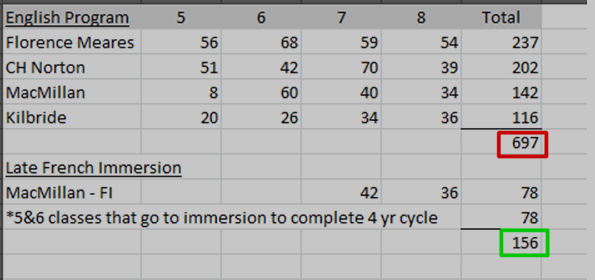 This graphic demonstrates the total number of students at Pearson if Pearson were to have the four listed schools as it catchment, and if late French Immersion were sent to MM, based on elementary school data today (697 estimated). It also indicates how many students MM would add if it were to receive Late French Immersion students (156 estimated). 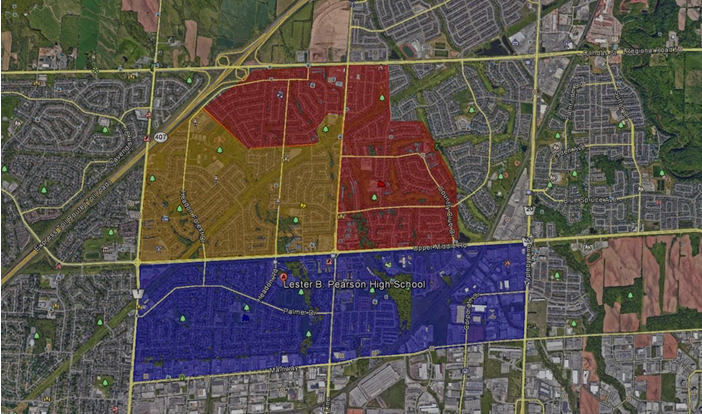 New catchment boundary for Pearson based on changes (Kilbride not shown). Red = Hayden; beige = M.M. Robinson; blue = Pearson If Bateman doesn’t close, MM Robinson adds 137 students, plus Havendale Lands Development, plus possible future distribution of other new developments.
If Bateman closes, MM Robinson add 247 students, plus Havendale Lands Development, plus possible future distribution of other new developments.
Pearson adds 266 students, plus possible future distribution of other new developments.
Hayden subtracts 353 students, and then will add possible future distribution of other new developments.
This straight-forward proposal puts all three school in the North at sustainable utilization levels.
What’s killing Pearson is choking the school of its elementary feeder schools. The Board has never explained any rationale for this decision and the trustee has never asked why it was done.
Will Nisan get a hearing; does he have the support of his school trustee?
Nisan isn’t the only Pearson alumni who has concerns over what has been done to the school. George Ward attended the meeting at which Director of Education Stuart Miller explained what he had set out to do in his recommendation after which he answered questions.
Ward had some questions of his own but learned hat he wasn’t allowed to ask questions. That didn’t seem to bother him – he bellowed out a question which led to the Chair of the meeting insructing the trustees to stand and leave the room – the meeting was over.
Ward wanted to know if the HDSB forecasts are for 10 years and updated yearly then why is the Director of Education recommending the closure of two high schools three years and a few months after the new school was opened?
Ward thinks the Director based his recommendation on a chart showing projected enrollments.
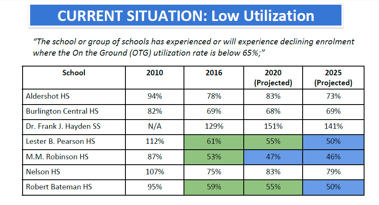 George Ward has a problem with this chart – he thinks the data behind it are flawed. Ward thinks the process of forecasting projected enrollment must be called into question – he is not alone in that point of view. Has the Director of Education made a recommendation based upon defective forecasting?
Ward maintains “The process of closing Burlington High Schools is flawed and should be immediately halted and to pursue the action to “Save All Burlington High Schools”.
That decision was never the Director’s to make – it is in the hands of the trustees now. They will get to hear delegations from the public on May 8th and 11th – 25 delegations each evening – five minutes each.
The Program Accommodation Review was flawed from the day it started; to a considerable degree because the way the province set out the regulations that had to be followed. This was compounded by the problems the Board staff had with publishing data the public was prepared to believe because it kept changing.
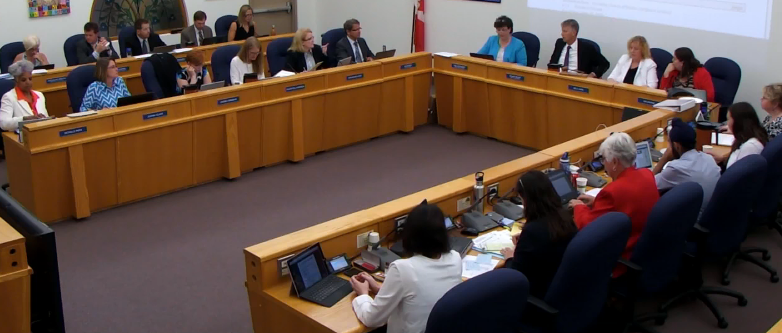 There is a crisis of confidence in the Board of Education trustees. There was and still is a crisis of confidence. Will the trustees sand up for the public that elected them – or will they role over and do what the Director of Education has recommendation.
The trustees are there to lead – when the Chair Kelly Amos chooses to not actually attend the meeting but take part by telephone conference call – one wonders where the leadership is coming from.
If the Chair was ill and not able to actually attend – a simple brief media release could have informed the public.
Of the 11 trustees just the one distinguished herself; Amy Collard had tough questions and when she didn’t get answers that satisfied her – she made sure the Director of education know she was not pleased.
The public now has time to delegate and make a case for a specific decision. This isn’t the time to complain about one group of parents throwing a school under the bus; this is the time for the leaders of the different schools to meet and come up with a strategy and take it to the trustees.
 Ian Farewll could be talked into another meeting and Steve Cusson would still be at PARC meetings if they had let him. There were some very talented people involved in the PARC process. Lisa Bull from Bateman, Steve Cussons from Aldershot, Steve Armstrong from Pearson and Kate Nazar from Nelson to name just a few – need to make phone calls to each other. Ian Farewell can be convinced to attend one more meeting.
Bull brought small bottles of wine to the closing PARC meeting to hand out. Buy a case of the stuff and get the parent leaders in the same room and work it out.
What city Councillor Meed Ward is going to do at this point is anybody’s guess. She is know to enjoy a glass of wine, perhaps that will stir the leadership gifts she does have.
The current crew of trustees do not appear to be able to do the job – the parents that elected them are going to have to step in and give them some guidance.
There isn’t a lot of time left.

 By Dianne Miller By Dianne Miller
APRIL 28th, 2017
BURLINGTON, ON
The reaction begins: parent Dianne Miller write about her experience at the meeting where Director of Education Stuart Miller reports to the trustees.
After attending a rally for two schools (I have a teenager at each of the proposed school closure sites) prior to the meeting last night I went from a feeling of wow – so many care – to wondering if it is remembered that two schools are up for closure.
I apologize for the length of this letter, I hope you will take the time to read it.
For three hours, a group of parents, students, and community members, sat and listened both to Stuart Miller trying to defend the most expensive option that he is recommending and to the school trustees who had a chance to ask many, many questions. Kudos to some of the trustees. It was obvious some had read the proposal; reflected; made notes; had very pointed questions; were there to challenge the proposal; hear rational arguments; present alternatives; defend the school they were representing (if up for closure). The difference in those fighting for their school and those who were not was striking.
I have to respond to some things that I heard last night that were in obvious conflict or were not addressed for myself.
1) A gentleman sitting beside Mr. Miller (to his left for those sitting in the community section) (Dom Renzalla) responded to why Kilbride students had been removed from LBP and redirected to Frank J. Hayden High School.
The rationale…it didn’t make sense for them to pass by two schools. Really? Then what justification was reached to have Orchard students “pass by” LBP to head to Nelson and/or Bateman? What justification was utilized to take two new northern community developments (one already decided in a boundary review (prior to the PARC process completion) and another slated to MMR in the Director’s proposal) to pass by LBP (the closer school) to head to MM Robinson?
2) The focus in response to the only question Trustee Papin seemed to ask related to defending LBP related to the decreasing numbers. The response – Kilbride students were only about 80 students (it was closer to 120) and wouldn’t stop the declining numbers. No but ignoring the fact that Hayden was originally meant to have 4 feeder schools but now has 7 feeder school while Pearson has 1.5 feeder schools definitely is relevant. So too is the decision to have the two new developments go to MMR (passing by LBP). A further 2 other proposed developments north of the highway has also been ignored.
No matter what facts/logic that has been put forth – i.e. 1284 of the 1800 empty spaces are south of the highway; 3 years of overcrowding at Frank J. Hayden (that’s okay, we will monitor); and the fact that both MMR and LBP can be the solution to that overcrowding, have all been roundly ignored.
3) Splitting cohorts – this seems to change depending on the situation and which school is being discussed. So the ideal is no splitting of cohorts? Well, C.H. Norton is split to 1/2 to MMR and 1/2 to LBP. No problem. Gifted program – oh well, no problem, in the proposal, with splitting even though already low numbers in this stream that needs to be back-filled. The new development – nope – it cannot go to LBP because then you might have to split the English and French cohort – no can do. Not sure how that decision why reached? Why did they have to be split – given “LBP’s declining numbers” both English and French were able to be accommodated at LBP. Frank J. Hayden – French Immersion – sure no problem – let’s move them from the student body at Hayden and re-route to MMR. Robert Bateman – no problem in tearing apart the different cohorts and splitting between multiple schools. Central, once under consideration for closure, presented the argument that the cohorts would be split (i.e. to Aldershot and to Nelson and suddenly that wasn’t okay. It is convenient how there is an issue with cohorts until it doesn’t suit the narrative being spun.
4) Late French Immersion (LBP) and French Immersion. I haven’t heard the difference addressed once. So, LBP’s Late French Immersion program is going to move to MMR? How is that stream going to work with the FI group that has worked in that stream from Grade 1? Normally one needs to get permission to switch over or needs to be at a level to integrate with the FI stream from Late French immersion. So how is this going to be dealt with? Doesn’t this then exacerbate conflicts?
5) Nursery Co-op at LBP. This item/group has been given little to no thought. LBP was adapted to include accommodation for the Nursery Co-op. A third gym was added with city and community donations. This program has been here for 40 years. Zero mention/zero consideration. Apparently though, per the report, no adaptation is needed with the LBP move. See you later Nursery Co-op program. The “we will have to consider” etc. what to do with this group is not reassuring. Given that you will throw all schools into over capacity, what responsibility will you possibly feel to accommodate this amazing co-op win/win program that has flourished at LBP?
6) The most expensive option. MMR and Bateman from what I understand, have both undergone some adaptations for special needs programming. This costs money. Now we will wipe out one school and all of the money put into those adaptations (including the industrialized kitchen, which is no where else) and replicate them at Nelson. How in any way, shape or form is this showing fiscal responsibility? As a taxpayer I was appalled to hear Mr. Miller state, “12 million dollars may seem like a lot but”. No, stop after the but. It is a lot of money. It is duplicate money when Bateman already has those features. It is sheer irresponsibility on behalf of this board to even consider an addition to Nelson while closing Bateman which already has those features. The justification of having one fully adapted location in the South and North does not warrant this expenditure. You see, it is already in the south. Spend the funds if you want it at MMR only to upgrade.
7) We heard a lot about we cannot remain at status quo. Boundary change will not fix the problem. Let’s address the status quo. So, Aldershot gets to remain at status quo in the Director’s current proposal. Hayden remains at status quo (minus the FI students). The red herring for Aldershot is that it might become a theme school (which the Director mentioned in his report and at the start of the meeting). This plan was then diminished by Stuart Miller himself as probably not workable (as it hasn’t worked in other areas) half way through the night. So why the game? Why the red herring that one is even going to look at this if you are already determining it is going to fail?
Status quo – you have left LBP at status quo (under-utilization) and Hayden at status quo (over-utilization) for 3 years while robbing students in both of a rich, full educational experience.
Re the boundary change – yes, indeed it will address some of the problems. LBP can absolutely be a solution to Hayden’s overcrowding as can MMR. All three schools can become more equitable with boundary change. Add into that the 4 potential new developments and you can definitely have a 3-way win.
Question – if the 90% capacity goal for each school isn’t working – perhaps the 90% goal is in error to begin with. Has anyone ever checked this underlying assumption/premise? Why not 85 or 80%?
8) Closing schools is very short term thinking. Looking at your past projections/reports you were off in those numbers. What is to say you are not going to be off in these projections? Once the land is gone, it is gone. I heard a trustee ask last night about other options. Why have they not been pursued 100%? When I spoke with Eleanor McMahon’s office, they too brought up other options prior to closure. Why is the Director determined to close not one but two schools prior to full exploration of all of these other options and funding available (again as mentioned to me by Eleanor McMahon’s office)?
9) As a community member with a student at LBP, I was disheartened to say the least that no one seemed to care about this school’s potential closure or the impact on the students/community. It was like one school’s closure only was being debated. Does no one care? Why is it so easy or accepted that LBP should close? The perception by the community is this has been planned. That has never been denied. Why will no one stand up, at the board level or trustee level for this group of students? They deserve every bit as much consideration as those at Bateman or elsewhere. By standing up for them I do not mean gutting their school and moving them elsewhere (if that is your response).
10) Questions were not answered last night. The “we’ll wait and see”; “we’ll monitor”; “that is a possibility”; “we will see how this plays out or levels out” inspired zero confidence. Why would anyone put their faith in a report that gave these responses as their answers when challenged?
11) I would love to see the minutes of the meetings leading up to the decision to build Frank J. Hayden High school. I am sure one point included that the community was “growing” and that a “community school” was needed. But you see each community believes the same. While this point keeps being dismissed as this is in the past and we are here now, who gets to be held accountable for spending $32 million for a build that caused the current problem? That decision is going to result in two other schools being axed. This is acceptable how? It also brings into question why the public or even the Minister of Education should trust the current recommendations.
12) A question was asked (and not answered) as to what is an acceptable level of over-capacity. The current reality at Frank J. Hayden (with the we will monitor attitude) is:
Students have classes in the hallway, in the cafeteria and in the community library next door
There are 12 portables currently on site – potentially 18 in the future
A lie was told last night about how students are maybe in the portable for one class then in the school. That is not true. Some students want to leave Hayden as their whole school career has been spent in portables only.
If Hayden is at over-capacity why is it still accepting new students; why is it actively recruiting students for sports teams from other schools?
Surely this is a fire hazard.
The solution to the over capacity – rezoning of the parking bylaws. Really? So the community (for the parks, library, school) are going to fight it out for parking spaces to accommodate potentially 18 portables? More fire hydrants? Yet you have a school (LBP) which has room for expansion without these issues. Yet, zero consideration is given to this obvious solution.
13) In perhaps the height of insensitivity, given the divisive and emotional nature of this process, I cannot believe that the issue of potentially building yet another shiny new school in the south (meaning even more schools south of the hwy would close) came up last night. Seriously, someone really needs to rethink why they are in the position they are in and who votes them in. This is in the student’s best interests how? What happened to, “we are not here to close schools, no one wants to do this.”?
14) Even given all of the proposals some of the streams still may not be where they need to be. Wasn’t that was this process was supposed to be partly about (as well as under-utilization)? May I submit that just looking at programming in and of itself without giving weighting to:
a) ability to participate in sports teams b) clubs c) single lunches (preferred by school admin) d) graduating with those you began Gr 9 with e) being known by your teachers and fellow students f) safety/bullying issues g) social issues – i.e. anxiety, integration, etc. for some all need to be considered.
Take off the narrow focused blinders. Saying that those other issues, or even special needs considerations violates the spirit of the a) under-utilization and b) programming which triggered the PAR is operating in a vacuum. You cannot just look at two facets. Again, to do so, does not take into account a 360 perspective and full interests of the student. It checks a box. It meets a rigid criteria. It is a self imposed rule that is very narrow in its’ thinking.
15) No one has ever answered this question for me. Is the board for or against online courses and other means of learning (i.e. virtual learning)? Throughout this process and in the surveys it was used as a negative and to justify conflicts, lack of options for programs etc. Yet, a gentleman, from the board, spoke last night about how it is increasing, how some prefer it, how they have increased it in younger grades – this made it sound like a positive. Which is it? Are we to presume it will be done away with once we have reach maximum capacity of streams since it is being utilized to point to course conflicts and a justification for moving pupils around?
16) Busing. Never addressed satisfactorily in this process. We already have a problem. The assumption is that the students from LBP all live 1.9 km from MMR. Not true. So what happens then? More busing? Gifted students split -north/south – busing for them? The Director hedged re northern busing for the gifted students. Not okay. This is an on-going cost. Makes no sense.
17) One consideration that was totally brushed off was parents indicating (or students) that to stay at their school, with their friends, they would drop out of French Immersion (Hayden). The Director didn’t give much weight to this. Parents I know, who’s children would go to MMR should LBP close as recommended, already have their paperwork and decision made to move to the Catholic school board system. Those in the gifted program, who have been together since Gr 1-8 (and who are slated to be split) – well, the attraction per the Director is that they would prefer to be closer to their home/community and save 10-20 minutes. Sir, with all due respect you do not know the students. Their friends, not the 10-20 minutes, are their priority. To the parents – the Fraser Report data, the reputation of their current school (over another), their need to keep their child from another at MMR (which is why they are at LBP due to past bullying issues) is what is of importance. I say this not to disrespect the staff and students at another school but to show how it is of concern. The loyalty of the FI students isn’t to FI – it is to their peers at Hayden and to their school. You are under-estimating this sir. If you are wrong, especially with the FI at Hayden you still have an overcrowding issue and then a stream issue.
18) This was supposed to be about the students. It is not. Those at Hayden have been left in overcrowding for three years. Current solution – move FI -maybe 50% (if others choose mainstream) or 100% and monitor the rest (re overcrowding). Utilize portables. Bateman – it is okay to impact the most vulnerable in our school population with yet another move. You claim to understand how hard this is for them – if you did and really took to heart reports of what change vs. consistency does mean to them – you would not be making this decision. For those at LBP who answered the report that they appreciated and loved the close relationship with the teachers; that being known means a lot to them (vs. a number in a larger school); to having that opportunity to really fit in by participating in a sports program; then you would do everything you could to revamp those numbers to bring them up to about a 600 range of student population. You wouldn’t be separating cohorts at the elementary level and streaming them to two different schools. You would actually listen to them; see their faces; hear their words; read their signs; feel their pain. My daughter feels crushed and invisible in this process. My son feels resigned that this has been the plan all along. I cannot in good conscience tell them otherwise.
19) Has anyone, and I mean anyone, given the rhetoric I keep hearing about optimum programming being at 1200 students per school or even consolidating schools, read the reports/studies (too numerous to mention by professionals in their field) that say that 600-800 is the best number for high schools? If we want to look at the experts and their opinions – why is all of that data, information, input, years of experience, routinely ignored? Or, in fact is this information not even being considered?
20) I felt it was very misleading when a question was asked about new growth in Burlington (in fact we are already at the proposed growth now that the City of Burlington had expected in future years), to hear only about development south of the highway (and mainly condos so it doesn’t really count). The north will have, per Jack Dennison, the final single dwelling units, multiple townhouses, etc. The south will have condos or high density on existing properties that will be rezoned. The city and the board appear to use different metrics. The city has adjusted and realizes, due to financial considerations and cultural differences, that more than one family may occupy a dwelling. This actually caused the explosion at Hayden partially (i.e. incorrect forecast/numbers were projected by the board). What adjustments are you talking about to reflect this reality?
21) What were the results of the survey where the community was asked to input on their choice of options. For many that I spoke with, the 7B option of “no school closures – but boundary reviews” seemed to be the prime choice. Yet, even before your final report, that was being discounted as one that would not work. What then is the purpose of all these surveys – student, parent, community, first meeting (where no questions were answered), if input is ignored?
I have said it before and I will say it again, if you didn’t go into these jobs with the intention of closing schools, then that should be your starting and ending point. You are in the education field – be creative. All of the individuals that are working so hard to save their schools have put hours into coming up with creative ideas, ways to save their schools. Don’t ignore them. Stop seeing the children as a group – as an entity. They are individuals. Work with them, work with the community, to save all of our Burlington schools.
I write this letter for our community schools not just for my daughter and son, but for all the children and future high school students. They are worth it.

 By Ray Rivers By Ray Rivers
April 28th, 2017
BURLINGTON, ON
Like a growing number of people these days, I almost never read a newspaper anymore, though I seem to be searching for more information than ever before. Oh sure a couple papers get delivered to the end of my laneway most days. That gives my dog some practice retrieving and allows me to pull off the sudoko. But the rest of the newsprint and advertising material make it to the fire-starter box mostly unscathed.
 Guys like this really existed once – and they really wore hats like that. Like so many, I just don’t have time to read any one paper anymore because I don’t get all I need from a single paper. There are so many potential sources of information of varying quality out there today such that that a single daily no longer does the job. So why pay for fire-starter?
Besides restricting oneself to only one paper, no matter how objective it claims to be, can’t but influence attitudes and beliefs. Editorial slant and policies are just as important as the topic at hand – sometimes more. So if the Toronto Sun and National Post are biased to the right and the Star too far left, does that mean we should all subscribe to the Globe and Mail? It’s not that simple.
The US leading network, Fox News, has long called itself ‘fair and balanced’, when we all know it is anything but. But then MSNBC, its politically polar opposite, is apparently even more opinionated. More opinion and less news – that is the trend today.
Then there are late night talk shows. Former ‘Daily Show’ host, Jon Stewart, used to brag about more people getting their news from his comedy show than the regular networks. Indeed, coupling news with entertainment may be the most effective way to deliver information to the public.
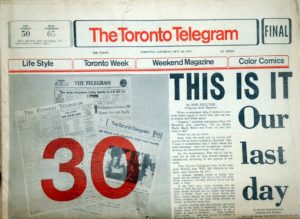 There was a time when Toronto had three daily newspapers – each having several editions. It was a battle royal until the “Telly” folded. Thanks to technological evolution it now only takes only a couple of keystrokes to find anything on almost any topic of your choice. And that will eventually bring the traditional news networks and papers to their natural conclusion – and perhaps spin-off some other medium. Sure there will be still be some real news on the internet but you’ll have to search to find what you want among the blogs, opinion columns and fake news stories.
Objectivity is in the mind of the beholder these days, it seems. Otherwise how could so many seemingly intelligent people who look at the same facts come to alternate conclusions. Was the crowd at Trump’s inauguration larger than the one at Obama’s? Did Russia really hack into US political party computers? Are the high costs of electricity in Ontario due to Mike Harris’ deregulation or McGuinty’s green energy?
Trump has coined the term ‘fake news’ though we all know he is the master of all fakers. Truth can be what we want to believe it to be. And the guy who has become the US president, like in the fable about former president Washington, cannot tell a lie.
But the folks who make and run much of the internet are trying to do something about fake news. Google and Wikipedia, and even a United Nations agency, have stepped up to the plate promising to find ways to identify and reduce that problem. Good luck to them.
 Milla Pickfield started an internship as a journalist interviewing the Chief of Police. She aced it. Bottom line is that it is everyone for themselves when it comes to information and mis-information. And perhaps the quickest way to authenticate a story is check who else is carrying it. Peer review for professional journals includes the consideration of bibliographic sources, above and beyond the essence of the story itself. So shouldn’t we all be as careful?
And that means it becomes our responsibility, each and every one of us, to exercise vigilance over what we read and what we believe to be true. The old adage that ‘news is what’s in a newspaper’ is no longer valid. It might just be fake reporting or unsupported opinion.
This weekend the Canadian Association of Journalists is holding its annual convention and awards for Canadian journalism in Ottawa. I’ll be there looking for some answers on this topic, but I won’t be holding my breath.
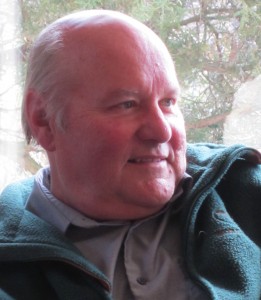 Ray Rivers writes weekly on both federal and provincial politics, applying his more than 25 years as a federal bureaucrat to his thinking. Rivers was a candidate for provincial office in Burlington in 1995. He was the founder of the Burlington citizen committee on sustainability at a time when climate warming was a hotly debated subject. Tweet @rayzrivers Ray Rivers writes weekly on both federal and provincial politics, applying his more than 25 years as a federal bureaucrat to his thinking. Rivers was a candidate for provincial office in Burlington in 1995. He was the founder of the Burlington citizen committee on sustainability at a time when climate warming was a hotly debated subject. Tweet @rayzrivers
Background links:
Newspapers – Newspapers Dying – Columnists vs Bloggers – US Fairness Doctrine –
Truth – Tump’s Truths – Media Bubble – Google and Fake News – Wiki and Fake News –
UN Fake News – Fox vs MSNBC –

|
|































































































